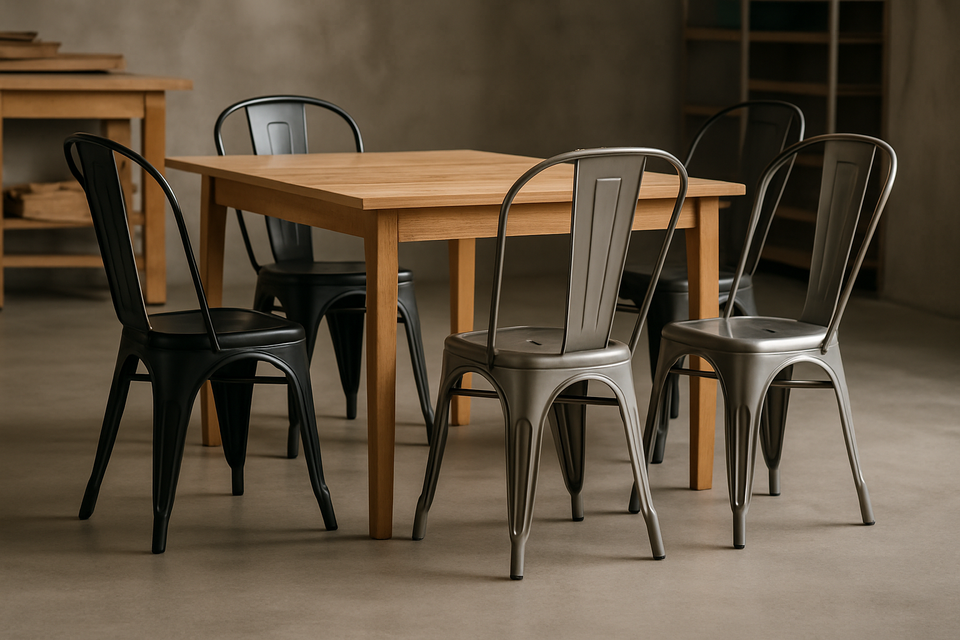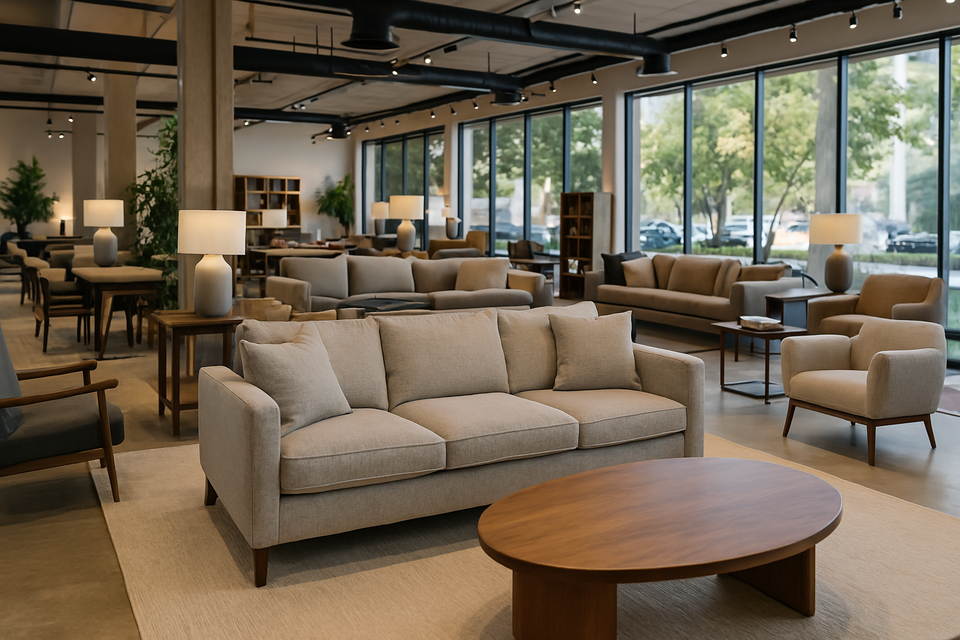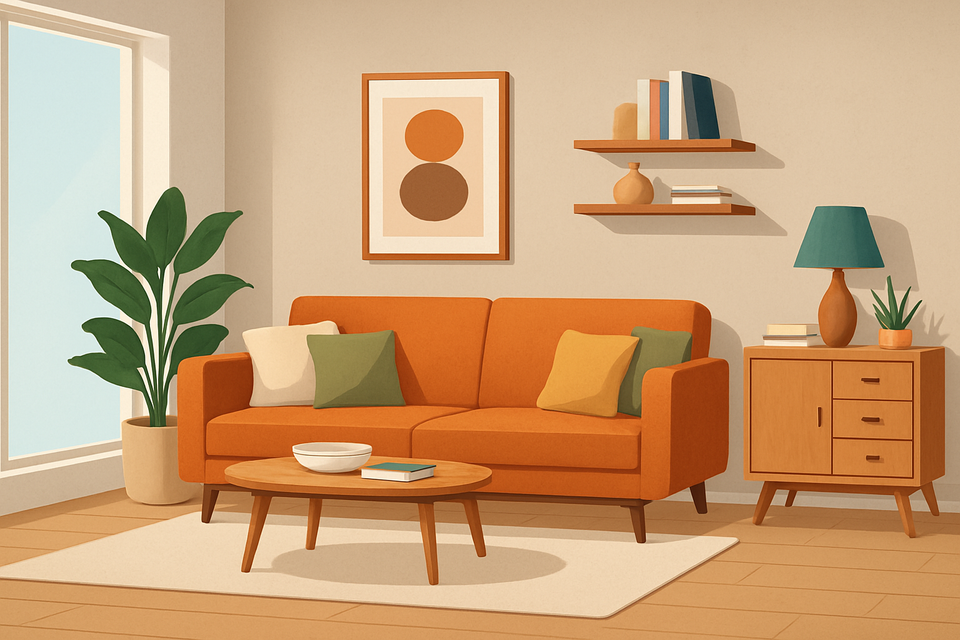Types of Living Room Chairs
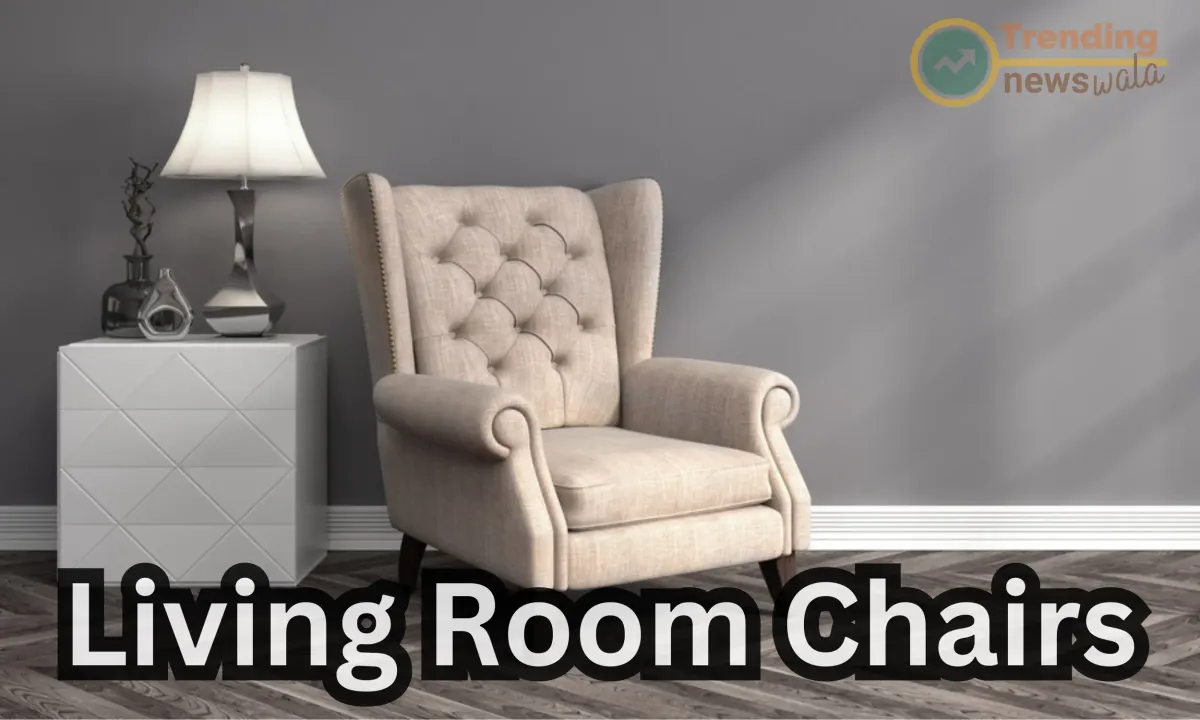
Chairs are one of the most basic things found in homes all over the world. They are affordable, useful and easily available almost everywhere. When it comes to buying chairs, one can choose from a plethora of options both online and offline. Nowadays, you can find chairs made of different materials as well as of different designs to suit the look you’re going for. Several things like the size, color, and material are to be kept in mind while looking for a Sofa Sets Online.
At Furniturewalla, you can get your hands on some of the most durable as well as stylish living room chairs on the market. There are so many options for kids and adults, and you can easily find what you’re looking for at an extremely affordable rate here. Here are 5 of the most popular living room chairs from a furniture store in Bangalore
Living room chairs come in a wide variety of styles, shapes, and materials, each designed to cater to different preferences, needs, and decor themes.
Here are some common types of living room chairs:
Armchair
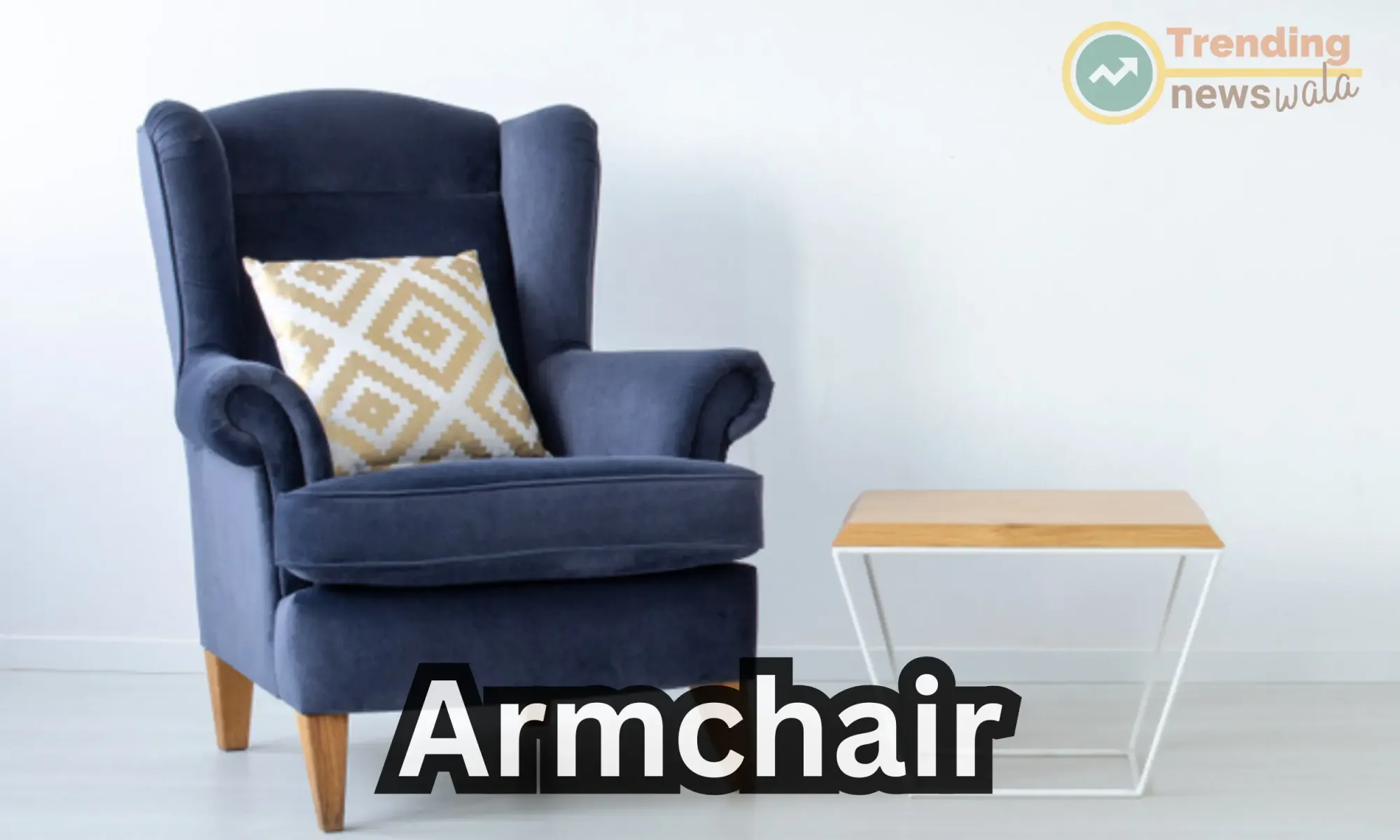
Armchairs are a popular and timeless type of living room chair. They are characterized by their comfortable padded seats and armrests, which provide excellent support for relaxation and lounging. Armchairs come in a wide range of styles, materials, and designs, making them versatile additions to various interior decor themes. Here's more information about armchairs:
Key Features of Armchairs:
- Comfortable Seating: Armchairs are designed for comfort. They typically have cushioned seats and backrests that offer a cozy and inviting place to sit and unwind.
- Armrests: The defining feature of an armchair is its armrests, which provide support for your arms and hands. They enhance comfort and make the chair suitable for reading, watching TV, or simply relaxing.
- Variety of Styles: Armchairs come in various styles to suit different tastes and decor themes. You can find traditional, modern, contemporary, mid-century, and even vintage or antique-style armchairs.
- Materials: Armchairs can be upholstered in a range of materials, including fabric, leather, faux leather, and microfiber. The choice of upholstery material affects both the chair's appearance and comfort.
- Leg Styles: The legs of an armchair can vary in style, from wooden tapered legs to metal or plastic bases. The leg design often complements the overall aesthetic of the chair.
- Color Options: Armchairs are available in a wide array of colors and patterns. Whether you prefer neutral tones, bold colors, or intricate patterns, you can find an armchair to match your decor.
- Size: Armchairs come in different sizes to accommodate various room dimensions and user preferences. Some are compact and space-saving, while others are more generously proportioned.
- Optional Features: Some armchairs come with additional features, such as reclining mechanisms, swivel bases, or built-in cup holders and storage compartments for added convenience.
Uses of Armchairs:
- Living Room Seating: Armchairs are commonly used as additional seating in the living room. They pair well with sofas and coffee tables, creating a comfortable and inviting seating arrangement.
- Reading Nooks: Placing an armchair in a corner with good lighting creates a cozy reading nook where you can curl up with a book or magazine.
- TV Watching: Armchairs are excellent choices for watching television or movies. Their supportive backrests and armrests provide a comfortable viewing experience.
- Home Office: Armchairs with ergonomic features can serve as comfortable seating options for a home office or workspace.
- Bedroom: An armchair in the bedroom can be used as a place to sit while getting dressed, putting on shoes, or as a decorative element in a cozy corner.
- Guest Rooms: Armchairs can be placed in guest bedrooms to provide comfortable seating for guests when they're not sleeping.
- Foyer or Entryway: A stylish armchair near the entryway can serve as a convenient spot for putting on or taking off shoes and welcoming guests.
- Nursery: In a nursery, a comfortable armchair with soft upholstery can be used for nursing, rocking, or comforting a baby.
Tips for Choosing an Armchair:
- Consider Comfort: Test the chair's comfort by sitting in it and assessing the cushioning, back support, and armrest height.
- Measure Your Space: Ensure the armchair's size fits well within your available space without overcrowding the room.
- Match Your Decor: Choose an armchair that complements your existing decor in terms of style, color, and material.
- Durability: Select a chair with quality construction and durable upholstery, especially if it will be used frequently.
- Budget: Determine your budget for the armchair and explore options within your price range.
- Functionality: Think about any additional features you may want, such as reclining, swiveling, or built-in storage.
- Maintenance: Consider the ease of cleaning and maintaining the upholstery material, especially if you have pets or children.
- Personal Style: Ultimately, choose an armchair that reflects your personal style and adds character to your living space.
Whether you're seeking a classic, contemporary, or eclectic look, an armchair can be a versatile and comfortable addition to your living room or any other space in your home.
Recliner
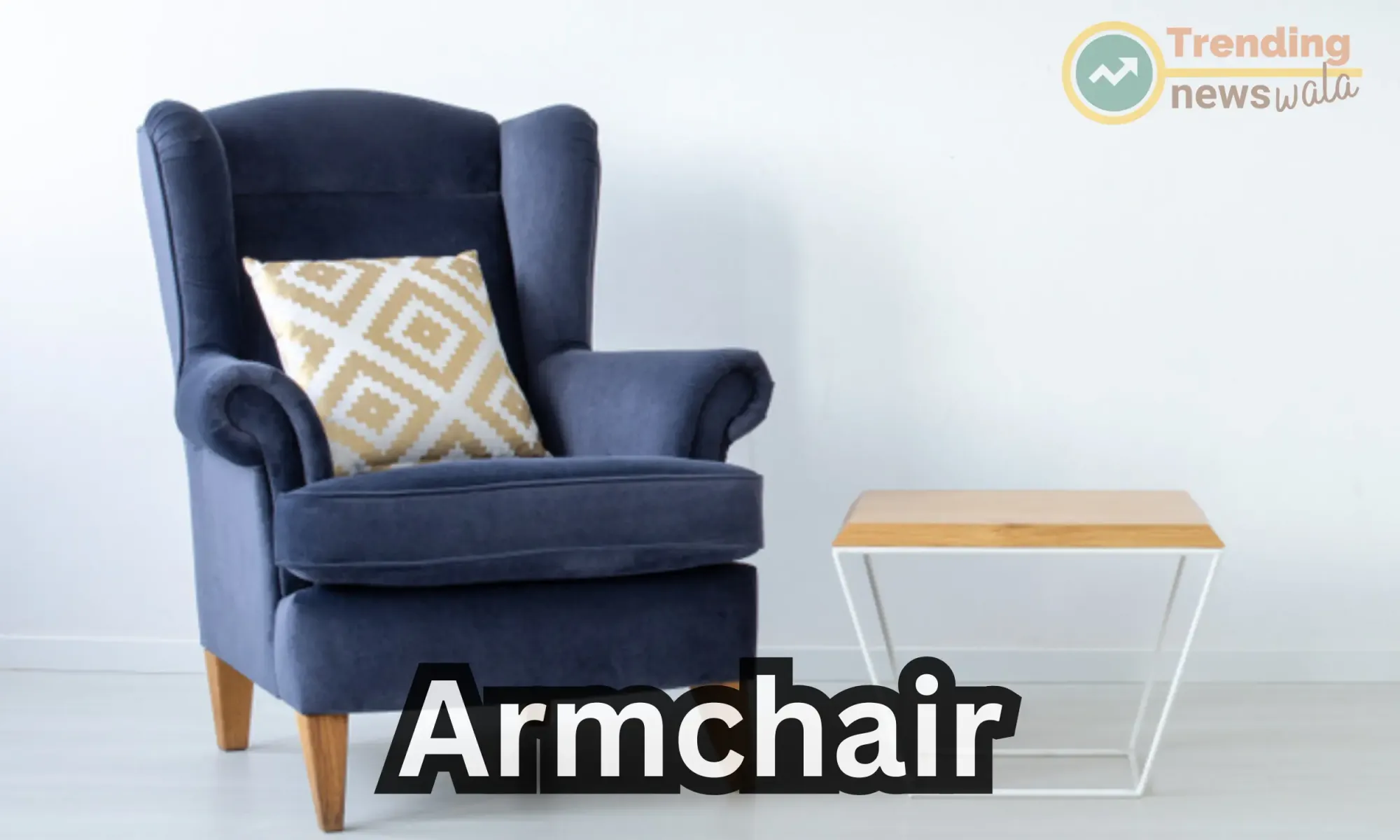
Recliners are a popular type of living room chair designed for ultimate comfort and relaxation. They are known for their unique reclining feature, which allows the user to adjust the chair's backrest and often extend a footrest for lounging. Recliners come in various styles, sizes, and materials, making them versatile additions to many living room setups. Here's more information about recliners:
Key Features of Recliners:
- Reclining Mechanism: The defining feature of a recliner is its reclining mechanism, which allows the chair's backrest to tilt backward while extending the footrest. This feature allows users to lean back and put their feet up for a more relaxed sitting position.
- Comfortable Padding: Recliners are known for their plush and comfortable padding. They typically have generously cushioned seats, backrests, armrests, and often provide extra lumbar support for enhanced comfort.
- Manual and Power Recliners: Recliners come in both manual and power (electric or motorized) versions. Manual recliners require the user to push back on the backrest to recline, while power recliners have a button or remote control for effortless adjustment.
- Materials: Recliners can be upholstered in various materials, including fabric, leather, faux leather, and microfiber. The choice of upholstery affects the chair's appearance, texture, and durability.
- Size and Style Variety: Recliners are available in different sizes, from compact models suitable for small spaces to oversized options for maximum lounging comfort. They also come in a range of styles, from traditional and classic to modern and contemporary.
- Built-in Features: Some recliners come with additional features such as built-in cup holders, storage compartments, massage functions, and even heating elements for added convenience and luxury.
Uses of Recliners:
- Relaxation: Recliners are primarily designed for relaxation and comfort. They are perfect for unwinding after a long day, watching TV, reading, or taking a nap.
- Movie Nights: Recliners are a popular choice for home theaters or media rooms, providing an ideal seating option for movie nights with family and friends.
- Pain Relief: Many people use recliners to alleviate back pain, leg discomfort, and other physical discomforts. The adjustable reclining positions can offer relief and support.
- Nursery or Baby Room: A recliner can be a valuable addition to a nursery or baby's room, offering a comfortable spot for nursing, rocking, or soothing a baby to sleep.
- Elderly and Mobility: Recliners are often favored by the elderly or individuals with limited mobility, as they provide an easier way to sit down and stand up due to the chair's lifting feature in power recliners.
- Multi-Functional Spaces: Recliners can be used in multi-functional spaces, such as a home office or study, to provide a comfortable and ergonomic seating option for work or relaxation.
- Guest Room: Placing a recliner in a guest room offers visitors a comfortable place to sit, read, or relax during their stay.
Tips for Choosing a Recliner:
- Size and Space: Measure your available space to ensure the recliner fits comfortably without overcrowding the room.
- Reclining Mechanism: Decide whether you prefer a manual or power recliner, considering your convenience and mobility needs.
- Upholstery Material: Choose an upholstery material that suits your lifestyle, whether it's fabric, leather, or another option that's easy to clean and maintain.
- Style and Design: Match the recliner's style to your existing decor, whether it's traditional, contemporary, or somewhere in between.
- Comfort and Support: Test the recliner's comfort by sitting in it and evaluating the padding, lumbar support, and overall comfort level.
- Budget: Determine your budget for a recliner, considering the additional features and quality of construction.
- Warranty: Check the manufacturer's warranty to ensure your recliner is covered in case of defects or issues.
Recliners are versatile and comfortable seating options that cater to various needs and preferences. Whether you're seeking a classic, contemporary, or highly functional recliner, there are plenty of options available to enhance your living room or other living spaces.
Accent Chair

Accent chairs are stylish and eye-catching seating options that are designed to add a unique and decorative touch to a room. They are often chosen for their bold designs, colors, and patterns, which make them stand out in a space. Accent chairs can be used in various rooms within the home, and they come in a wide range of styles and materials. Here are key features and uses of accent chairs:
Key Features of Accent Chairs:
- Unique Design: The primary feature of an accent chair is its unique and distinctive design. These chairs often feature eye-catching patterns, bold colors, or unconventional shapes that set them apart from standard chairs.
- Versatile Styles: Accent chairs are available in a variety of styles, including traditional, contemporary, mid-century modern, bohemian, and more. You can choose an accent chair that complements your existing decor or adds a contrasting element for visual interest.
- Materials: Accent chairs can be crafted from various materials, such as wood, metal, upholstered fabric, leather, or a combination of materials. The choice of material can affect the chair's overall look and comfort.
- Size: Accent chairs come in different sizes, from compact chairs that fit snugly into smaller spaces to larger, statement-making chairs that serve as focal points in a room.
- Armrests: While some accent chairs have armrests, others are armless. The presence or absence of armrests can influence the chair's comfort and style.
- Upholstery: Upholstery options for accent chairs are diverse and can include various fabrics, leather, or even natural materials like rattan or bamboo. The upholstery material plays a significant role in the chair's comfort and appearance.
- Comfort: Although accent chairs prioritize aesthetics, they should also provide a comfortable seating experience. Consider the chair's seat depth, cushioning, and backrest design when evaluating its comfort.
Uses of Accent Chairs:
- Decorative Element: Accent chairs are primarily chosen for their decorative value. They can add a pop of color, texture, or pattern to a room, enhancing its overall aesthetic.
- Focal Point: An accent chair can serve as a focal point in a room, drawing attention to its unique design and making a bold statement.
- Additional Seating: Accent chairs can provide extra seating in a room, making them suitable for entertaining guests or accommodating family members.
- Reading Nooks: Placing an accent chair in a cozy corner with good lighting creates an inviting reading nook where you can relax and enjoy a book.
- Entryway Seating: An accent chair near the entryway can provide a convenient spot to put on or take off shoes, making it both practical and visually appealing.
- Bedroom Seating: In bedrooms, accent chairs can be used as decorative pieces, vanity chairs, or as seating for dressing areas.
- Home Office: An accent chair can serve as a stylish and comfortable seating option for a home office, adding personality to the workspace.
Tips for Choosing an Accent Chair:
- Consider Your Decor: Choose an accent chair that complements or contrasts with your existing decor, depending on the look you want to achieve.
- Color and Pattern: Think about the chair's color and pattern in relation to the room's color scheme and style. Bold colors and patterns can make a strong statement.
- Size and Scale: Ensure the chair fits comfortably in your available space without overwhelming the room or obstructing traffic flow.
- Comfort: Test the chair's comfort by sitting in it to ensure it meets your comfort preferences.
- Materials: Consider the durability and maintenance requirements of the chair's materials, especially if it will be used frequently.
- Placement: Think about where you plan to place the accent chair to determine the best style and size for that specific location.
Accent chairs are versatile decor pieces that can transform the look and feel of a room. Whether you choose an accent chair for its striking design, bold colors, or unique patterns, it can add personality and character to your living space.
Wingback Chair

A wingback chair is a classic and elegant piece of furniture characterized by its distinctive design, which includes high backrests with wing-like extensions, often upholstered features, armrests, and sturdy wooden legs. These chairs have a rich history dating back to the 17th century when they were originally designed to protect the sitter from drafts and offer a cozy and warm seating option. Today, wingback chairs are celebrated for their timeless style, versatility, and ability to add sophistication to various room settings. Here are some key features, uses, and tips for choosing a wingback chair:
Key Features of Wingback Chairs:
- High Backrest: Wingback chairs are defined by their high backrests, which extend above the sitter's head. This design provides excellent support for the head, neck, and upper back.
- Wing Extensions: The "wings" on the sides of the chair extend from the backrest to partially enclose the sitting area. Originally, these wings were intended to shield the sitter from cold drafts, but they also contribute to the chair's distinctive look.
- Armrests: Wingback chairs typically have armrests, enhancing comfort and providing a place for resting the arms.
- Upholstery: Wingback chairs are commonly upholstered in various materials, including fabric, leather, faux leather, and patterned textiles. The choice of upholstery can significantly influence the chair's appearance and comfort.
- Leg Styles: The legs of wingback chairs can vary in style, from traditional wooden legs with intricate carvings to more modern and streamlined designs. The leg style often complements the overall aesthetic.
- Nailhead Trim: Some wingback chairs feature decorative nailhead trim along the edges of the wings and seams, adding a touch of elegance and sophistication.
- Tufting: Tufting involves creating patterns of buttons or folds in the upholstery. It is a design element often found on wingback chairs, contributing to their opulent and classic charm.
- Colors and Patterns: Wingback chairs come in a wide range of colors and patterns, making it easy to find one that fits your decor theme and personal style.
Uses of Wingback Chairs:
- Statement Piece: Wingback chairs are often used as statement pieces in living rooms, home libraries, or dens. Their unique design and high back make them stand out and become a focal point.
- Reading Nooks: Placing a wingback chair in a well-lit corner of a room creates an inviting reading nook. The high back provides excellent support for reading and relaxation.
- Pairing with Sofas: Wingback chairs can be paired with sofas or loveseats to create a cohesive and stylish seating arrangement in a living room or sitting area.
- Dining Room: Wingback chairs are sometimes used as host and hostess chairs at the heads of a dining table, adding a touch of elegance to formal dining spaces.
- Bedroom: In bedrooms, wingback chairs can serve as decorative pieces, providing a place to sit while getting dressed or adding an accent to the room's decor.
- Home Office: Wingback chairs can be used in home offices or studies as comfortable and sophisticated seating options for work or meetings.
- Entryway: Placing a wingback chair near the entryway can offer a stylish spot for putting on or taking off shoes and can make a striking first impression.
Tips for Choosing a Wingback Chair:
- Consider Style: Choose a wingback chair that matches your decor style, whether it's traditional, modern, vintage, or eclectic.
- Size and Scale: Ensure the chair fits comfortably in your space without overwhelming it or obstructing traffic flow.
- Upholstery Material: Select an upholstery material that suits your lifestyle and maintenance preferences.
- Comfort: Test the chair's comfort by sitting in it to assess the cushioning, back support, and armrest height.
- Color and Pattern: Choose a chair color or pattern that complements your room's color scheme and decor theme.
- Leg Style: Consider the leg style of the chair and how it matches or contrasts with your other furniture pieces.
Wingback chairs offer a touch of timeless elegance and sophistication to any room. Whether you're looking for a comfortable reading chair, a statement piece, or a classic addition to your decor, a wingback chair can be a versatile and stylish choice.
Club Chair

Club chairs are a classic and comfortable type of seating that exudes a sense of luxury and relaxation. These chairs are known for their inviting design, which includes deep seats, cushioned armrests, and often, a cozy and overstuffed appearance. Club chairs have been a popular choice for decades, and their timeless style makes them a versatile addition to various interior decor themes. Here are key features, uses, and tips for choosing a club chair:
Key Features of Club Chairs:
- Generous Cushioning: Club chairs are characterized by their plush and ample cushioning, offering a comfortable and cozy seating experience.
- Armrests: These chairs typically have well-padded and gently sloping armrests that provide a comfortable place to rest your arms.
- Deep Seats: Club chairs feature deep seats that allow you to sink in and relax, making them ideal for lounging.
- Upholstery: Club chairs come in a variety of upholstery options, including leather, fabric, microfiber, and faux leather. The choice of upholstery can affect both the chair's appearance and comfort.
- Backrest Design: The backrest of a club chair can vary in design, with some featuring a slightly curved, rolled, or button-tufted backrest for added style.
- Leg Styles: Club chairs can have different leg styles, including wooden, tapered legs or more substantial, block-style legs. The leg style often complements the chair's overall aesthetic.
- Colors and Finishes: Club chairs come in a range of colors and finishes, allowing you to choose one that suits your decor theme and color scheme.
Uses of Club Chairs:
- Living Room Seating: Club chairs are commonly used as additional seating in the living room, often paired with sofas and coffee tables to create a comfortable and inviting seating arrangement.
- Reading Nooks: Placing a club chair in a well-lit corner with a small side table and good lighting can create a cozy reading nook where you can unwind with a book or magazine.
- Focal Points: Club chairs can serve as focal points in a room, drawing attention with their inviting appearance and providing a sense of comfort and relaxation.
- Pairing with Furniture: Club chairs can be paired with other furniture pieces, such as accent tables or ottomans, to create a cohesive and functional seating area.
- Bedroom: In bedrooms, club chairs can be used as decorative pieces or as a place to sit while putting on shoes or getting ready for the day.
- Home Office: Placing a club chair in a home office can provide a comfortable spot for reading, brainstorming, or taking a break.
Tips for Choosing a Club Chair:
- Consider Style: Choose a club chair that matches your decor style, whether it's traditional, modern, transitional, or eclectic.
- Size and Scale: Ensure the chair fits comfortably in your space without overcrowding the room or obstructing traffic flow.
- Upholstery Material: Select an upholstery material that suits your lifestyle and maintenance preferences. Leather is a classic choice for a timeless look.
- Comfort: Test the chair's comfort by sitting in it to assess the cushioning, seat depth, and armrest height. It should provide a comfortable and supportive experience.
- Color and Finish: Choose a chair color or finish that complements your room's color scheme and decor theme.
- Leg Style: Consider the leg style of the chair and how it complements or contrasts with your other furniture pieces.
Club chairs offer a perfect blend of style and comfort, making them an enduring choice for various living spaces. Whether you're looking for a classic leather club chair for a traditional setting or a fabric club chair with a modern twist, these chairs can enhance the overall aesthetic and comfort of your home.
Chaise Lounge
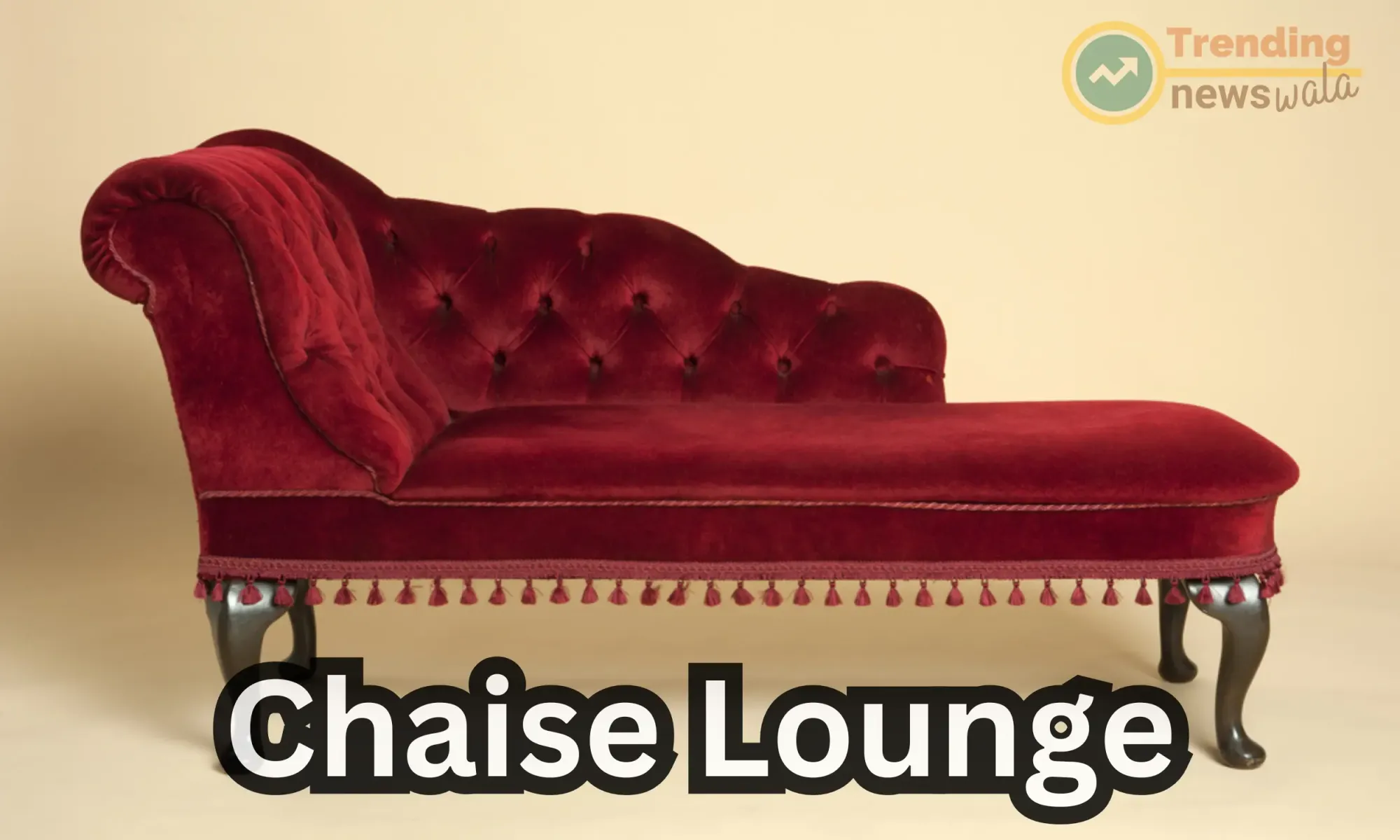
A chaise lounge, often referred to simply as a "chaise," is a stylish and versatile piece of furniture designed for reclining and relaxation. Its name is derived from the French term "chaise longue," which means "long chair." Chaise lounges are known for their elongated shape, allowing users to stretch out their legs comfortably. These pieces of furniture come in various styles and materials, making them suitable for a wide range of interior settings. Here are some key features, uses, and tips for choosing a chaise lounge:
Key Features of Chaise Lounges:
- Elongated Shape: Chaise lounges have a long and narrow profile, typically featuring a backrest and a single armrest on one side.
- Reclining Function: Chaise lounges are designed for reclining, allowing users to relax with their legs extended. Some models have adjustable backrests, enabling users to find their preferred lounging position.
- Comfortable Cushioning: Chaise lounges are generously cushioned for comfort, making them ideal for leisurely lounging, reading, napping, or sunbathing.
- Materials: Chaise lounges can be constructed from various materials, including wood, metal, wicker, or plastic for the frame, and upholstery options such as fabric, leather, microfiber, or outdoor-friendly materials for the cushioning.
- Leg Styles: The legs of chaise lounges can vary in style, from tapered wooden legs to sleek metal bases. The leg style often complements the chair's overall aesthetic.
- Design Variety: Chaise lounges come in a wide range of designs, from classic and traditional to modern and contemporary, allowing you to find one that suits your decor theme.
- Colors and Patterns: You can choose a chaise lounge in various colors and patterns to match your room's decor and personal style.
Uses of Chaise Lounges:
- Living Room: Chaise lounges can be placed in living rooms as elegant seating options for relaxation or as stylish accent pieces. They work well as additional seating alongside sofas and chairs.
- Bedroom: In bedrooms, chaise lounges are often used as decorative pieces or functional seating. They can serve as a cozy spot for reading, putting on shoes, or simply lounging.
- Sunrooms and Outdoor Spaces: Outdoor chaise lounges are designed for outdoor use and are perfect for sunbathing, poolside relaxation, or lounging on patios and decks.
- Reading Nooks: Chaise lounges can be placed in corners or near windows to create cozy reading nooks where you can escape with a book or enjoy a view.
- Home Office: In home offices or study areas, a chaise lounge can provide a comfortable spot for brainstorming, taking a break, or even as an alternative workspace.
Tips for Choosing a Chaise Lounge:
- Consider Style: Choose a chaise lounge that complements your decor style, whether it's traditional, modern, bohemian, or coastal.
- Size and Scale: Ensure the chaise lounge fits comfortably in your space without overwhelming it. Measure the available area before making a purchase.
- Upholstery Material: Select an upholstery material that suits your lifestyle and the intended use of the chaise lounge. Consider factors such as durability, maintenance, and indoor or outdoor use.
- Comfort: Test the comfort of the chaise lounge by sitting or lying on it to assess the cushioning, backrest support, and overall comfort level.
- Adjustability: If you prefer flexibility in your lounging positions, consider a chaise lounge with an adjustable backrest.
- Leg Style: Pay attention to the leg style and finish of the chaise lounge, ensuring it complements your existing furniture.
Chaise lounges are versatile and stylish pieces of furniture that can add both comfort and elegance to your living spaces. Whether you're looking for a chic indoor chaise lounge for your living room or a durable outdoor chaise lounge for your patio, there are plenty of options to choose from to suit your needs and aesthetic preferences.
Bergère Chair
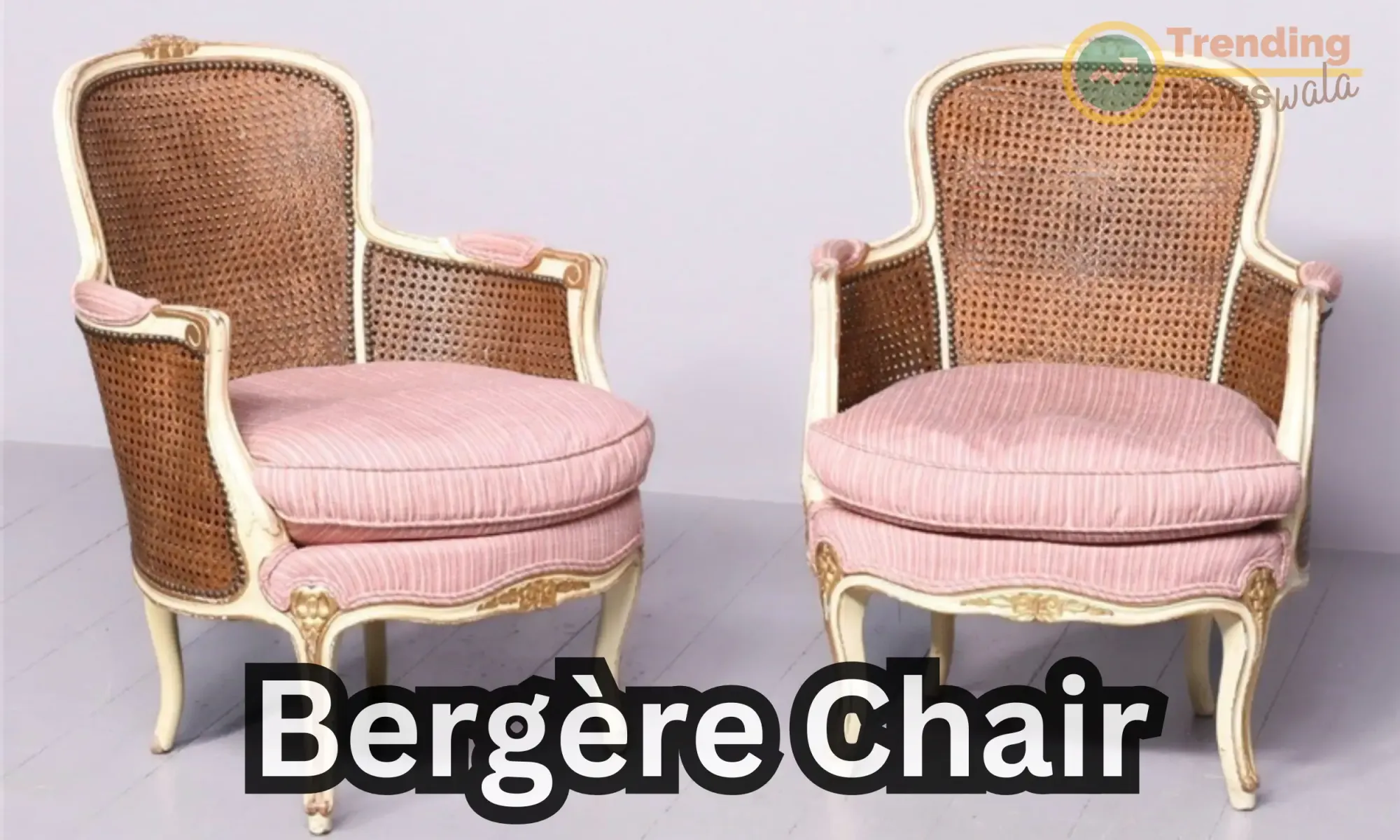
A Bergère chair (pronounced ber-ZHAIR) is a classic and elegant type of armchair that originated in France during the 18th century. These chairs are known for their distinctive design, which combines a cushioned seat and backrest with upholstered, padded armrests. Bergère chairs are often considered pieces of functional art and have a timeless appeal that complements various interior decor styles. Here are some key features, uses, and tips for choosing a Bergère chair:
Key Features of Bergère Chairs:
- Upholstered Frame: Bergère chairs typically feature an exposed wooden frame, often with ornate carvings or decorative details. The wooden frame surrounds the upholstered elements of the chair.
- Cushioned Seat: Bergère chairs have a generously cushioned seat that provides comfort for extended periods of sitting.
- Upholstered Backrest: The backrest of a Bergère chair is also upholstered and typically features a padded and tufted design for added comfort and style.
- Padded Armrests: One of the distinguishing features of a Bergère chair is its upholstered and padded armrests. These armrests offer a comfortable place to rest your arms and add to the chair's overall elegance.
- Removable Cushions: Many Bergère chairs have removable seat and back cushions, making it easier to clean and maintain the upholstery.
- Leg Styles: The legs of Bergère chairs can vary in style, with options such as cabriole legs, straight legs, or fluted legs. The leg style often complements the chair's overall design.
- Colors and Fabrics: Bergère chairs are available in a wide range of upholstery fabrics, colors, and patterns, allowing you to choose one that suits your decor preferences.
Uses of Bergère Chairs:
- Living Room: Bergère chairs are often used as elegant seating options in living rooms. They can be placed alongside sofas or used as standalone accent chairs to add sophistication to the space.
- Bedroom: In bedrooms, Bergère chairs can serve as decorative pieces or functional seating. They are commonly placed in front of dressing tables or near windows.
- Home Office: Placing a Bergère chair in a home office or study area can create a stylish and comfortable workspace. The padded armrests offer comfort during work or relaxation.
- Library or Study: Bergère chairs are well-suited for libraries or studies, where they can provide comfortable seating for reading or contemplation.
- Formal Dining: Some homeowners use Bergère chairs as host and hostess chairs at the heads of a dining table to add an air of sophistication to formal dining spaces.
Tips for Choosing a Bergère Chair:
- Consider Style: Choose a Bergère chair that matches your decor style, whether it's traditional, French country, or transitional.
- Size and Scale: Ensure the chair fits comfortably in your space without overwhelming it. Measure the available area before making a purchase.
- Upholstery Material: Select an upholstery material that suits your lifestyle and maintenance preferences. Consider factors such as durability, cleaning requirements, and the room's use.
- Comfort: Test the comfort of the Bergère chair by sitting in it to assess the cushioning, backrest support, and armrest height. Comfort is essential for extended periods of sitting.
- Leg Style: Pay attention to the leg style and finish of the chair, ensuring it complements your existing furniture and decor.
Bergère chairs are timeless and versatile pieces of furniture that can enhance the elegance and comfort of various living spaces. Whether you're looking for a classic Bergère chair with intricate carvings or a more simplified design to match a modern interior, these chairs offer both aesthetic appeal and functionality.
Tub Chair
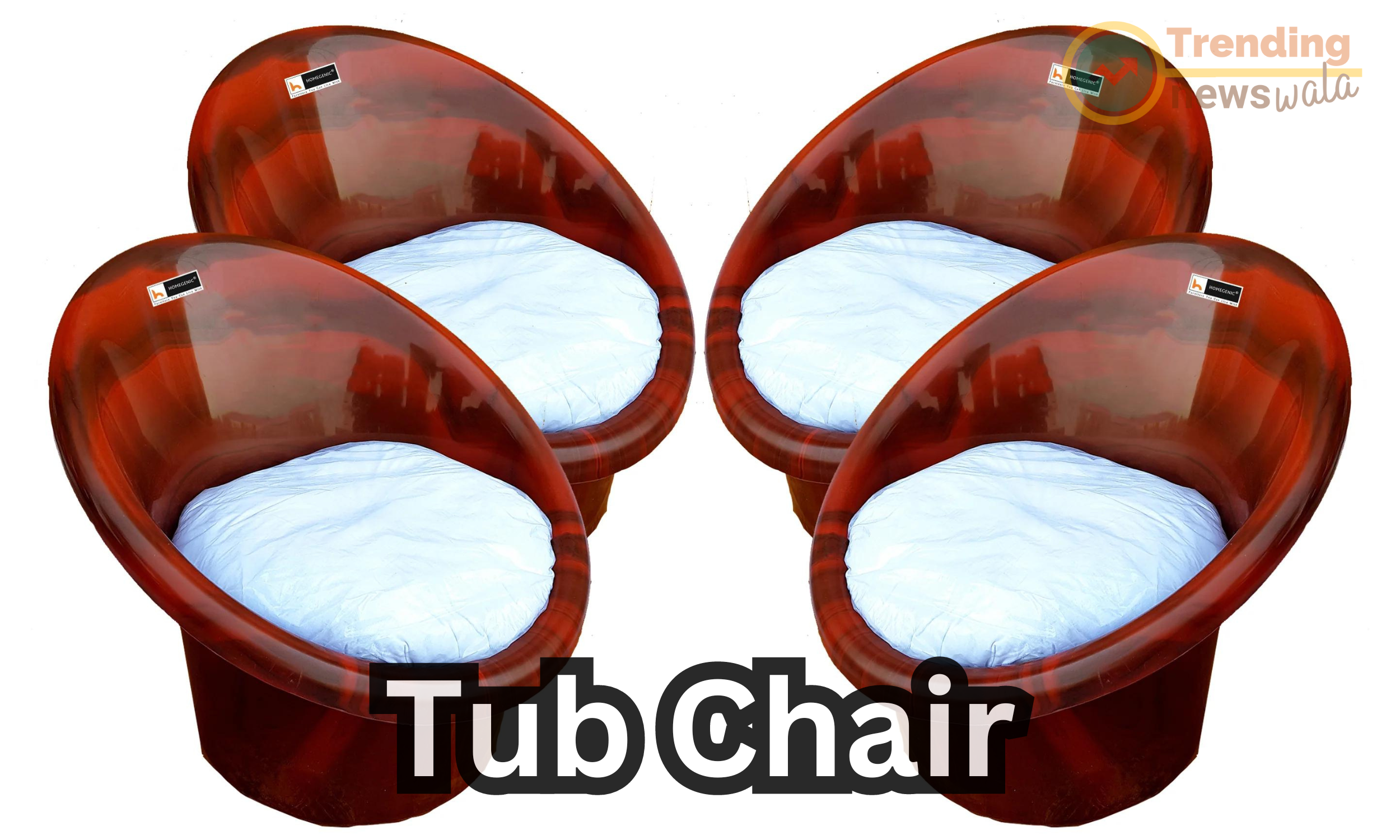
A tub chair, also known as a barrel chair, is a compact and stylish piece of seating furniture characterized by its curved, semi-circular backrest that wraps around the sides to form a continuous "tub" shape. These chairs are known for their unique design, comfort, and versatility, making them a popular choice for various interior settings. Tub chairs come in a wide range of styles, materials, and colors, allowing them to complement different decor themes. Here are some key features, uses, and tips for choosing a tub chair:
Key Features of Tub Chairs:
- Curved Backrest: The defining feature of a tub chair is its curved backrest, which provides a snug and cozy seating experience.
- Armrests: Tub chairs typically have integrated armrests that are part of the continuous curved design, providing support and comfort for the arms.
- Upholstery: Tub chairs come upholstered in various materials, including fabric, leather, faux leather, and patterned textiles. The upholstery choice can influence the chair's style and comfort.
- Leg Styles: Tub chairs may have different leg styles, such as wooden legs, metal legs, or hidden swivel bases. The leg style can impact the chair's overall aesthetic.
- Colors and Patterns: Tub chairs are available in a range of colors and patterns, making it easy to find one that suits your decor and personal style.
Uses of Tub Chairs:
- Living Room: Tub chairs are commonly used in living rooms as additional seating options or as stylish accent chairs. They can complement sofas and other seating arrangements.
- Bedroom: Tub chairs can be placed in bedrooms for decorative purposes or as functional seating. They work well in dressing areas, reading corners, or near windows.
- Home Office: Tub chairs can serve as comfortable and stylish seating options in home offices or workspaces.
- Entryway: Placing a tub chair in the entryway or foyer can provide a convenient spot to put on or take off shoes while adding a touch of style to the area.
- Dining Room: In some dining settings, tub chairs are used as head chairs or host and hostess chairs to add elegance and comfort to formal dining spaces.
- Commercial Spaces: Tub chairs are also found in commercial settings such as hotels, restaurants, and lounges, where they provide comfortable seating for guests.
Tips for Choosing a Tub Chair:
- Consider Style: Choose a tub chair that complements your decor style, whether it's modern, traditional, retro, or eclectic.
- Size and Scale: Ensure the chair fits comfortably in your space without overwhelming it. Measure the available area before making a purchase.
- Upholstery Material: Select an upholstery material that suits your lifestyle and maintenance preferences. Consider factors such as durability and ease of cleaning.
- Comfort: Test the chair's comfort by sitting in it to assess the cushioning, backrest support, and armrest height. Comfort is essential for extended periods of sitting.
- Leg Style: Pay attention to the leg style and finish of the chair, ensuring it complements your existing furniture and decor.
Tub chairs are versatile and space-saving seating options that can add a touch of style and comfort to various rooms in your home or commercial space. Whether you prefer a sleek leather tub chair, a colorful fabric option, or a vintage-inspired design, tub chairs are known for their ability to create inviting and cozy seating arrangements.
Slipper Chair
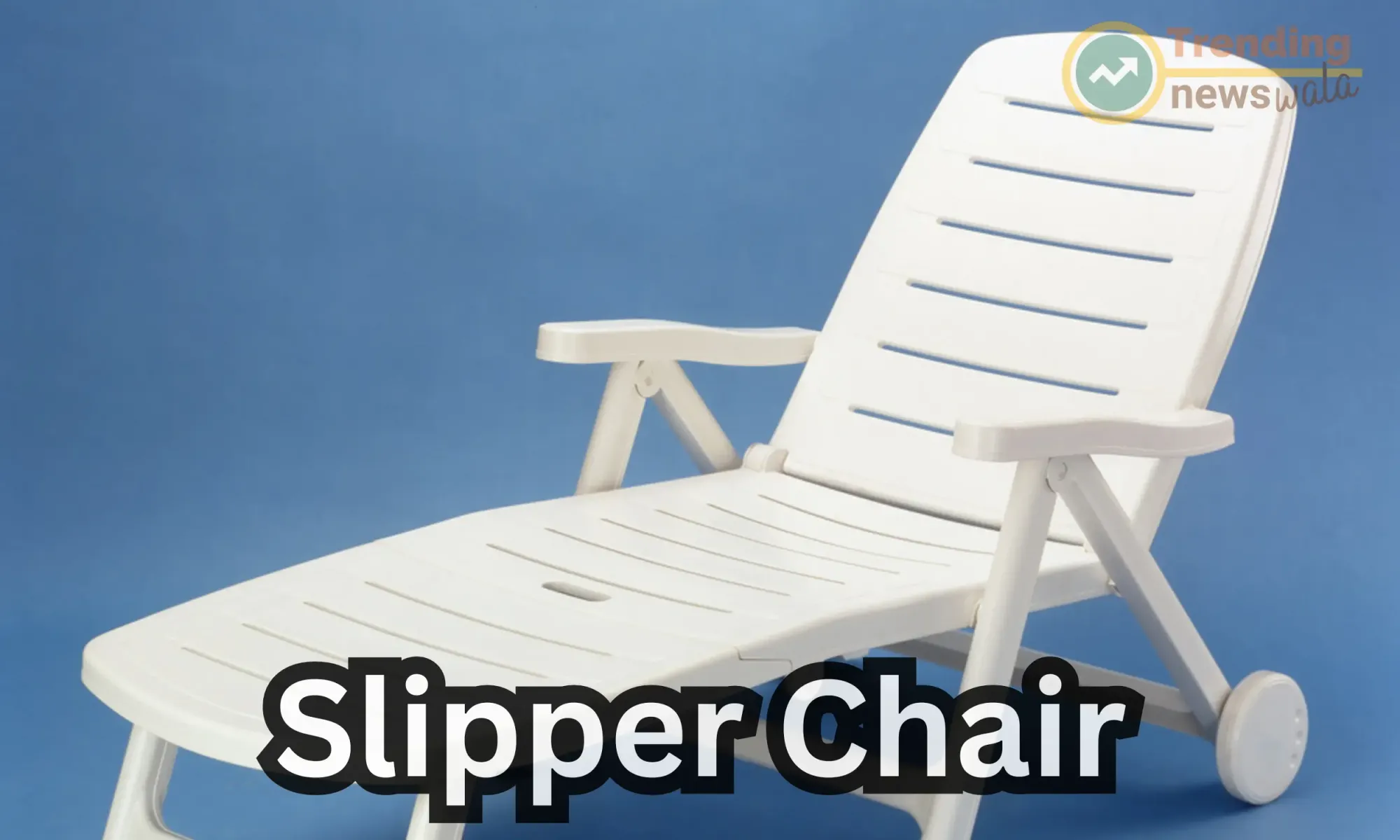
A slipper chair is a versatile and stylish seating option characterized by its armless design and low, wide seat. These chairs have a sleek and compact profile, making them a popular choice for small living spaces and various room settings. Slipper chairs are known for their simplicity and comfort, and they come in a wide range of styles, materials, and colors to suit different decor themes. Here are some key features, uses, and tips for choosing a slipper chair:
Key Features of Slipper Chairs:
- Armless Design: Slipper chairs are distinguished by their armless structure, which allows for greater flexibility in seating and placement.
- Low, Wide Seat: The seat of a slipper chair is typically low to the ground and wider than that of a standard dining chair, providing a comfortable and relaxed seating experience.
- Upholstery: Slipper chairs come upholstered in various materials, including fabric, leather, faux leather, microfiber, and patterned textiles. The choice of upholstery can impact the chair's style and comfort.
- Leg Styles: Slipper chairs may have different leg styles, including wooden legs, tapered legs, or metal legs. The leg style can influence the chair's overall appearance.
- Colors and Patterns: Slipper chairs are available in a wide range of colors and patterns, making it easy to find one that matches your decor and personal style.
Uses of Slipper Chairs:
- Living Room: Slipper chairs are commonly used in living rooms as additional seating options or as accent chairs. They can be placed near sofas and coffee tables to create comfortable seating arrangements.
- Bedroom: In bedrooms, slipper chairs can serve as decorative pieces or functional seating. They work well in dressing areas, reading corners, or near windows.
- Home Office: Slipper chairs can provide comfortable seating in home offices or workspaces, offering a stylish and ergonomic alternative to traditional office chairs.
- Entryway: Placing a slipper chair in the entryway or foyer can create a convenient spot to put on or take off shoes while adding a touch of style to the area.
- Dining Room: In some dining settings, slipper chairs are used as side chairs to complement a dining table, adding a modern and casual vibe to the space.
Tips for Choosing a Slipper Chair:
- Consider Style: Choose a slipper chair that complements your decor style, whether it's modern, traditional, contemporary, or eclectic.
- Size and Scale: Ensure the chair fits comfortably in your space without overwhelming it. Measure the available area before making a purchase.
- Upholstery Material: Select an upholstery material that suits your lifestyle and maintenance preferences. Consider factors such as durability and ease of cleaning.
- Comfort: Test the chair's comfort by sitting in it to assess the cushioning, seat depth, and overall comfort level. Comfort is important for extended periods of sitting.
- Leg Style: Pay attention to the leg style and finish of the chair, ensuring it complements your existing furniture and decor.
Slipper chairs are versatile and space-saving seating options that can enhance the comfort and aesthetics of your home. Whether you're looking for a sleek and modern design or a more traditional and patterned option, slipper chairs offer flexibility in arranging and styling your living spaces.
Swivel Chair
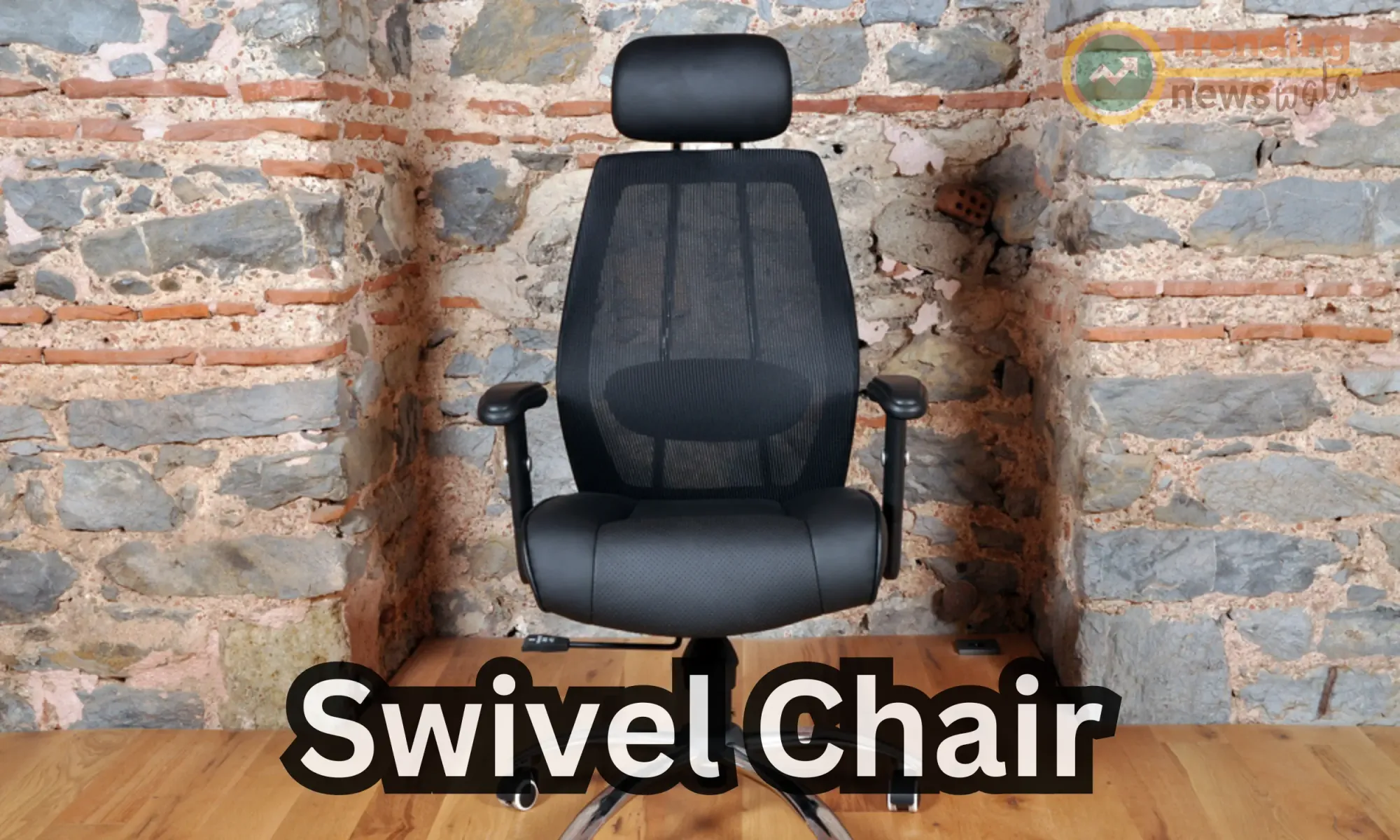
A swivel chair is a type of seating furniture that features a rotating base, allowing the chair to turn 360 degrees horizontally. These chairs are known for their versatility, functionality, and comfort, making them a popular choice for various settings, including offices, living rooms, home offices, and even dining areas. Swivel chairs come in a wide range of styles, materials, and designs to suit different needs and decor preferences. Here are some key features, uses, and tips for choosing a swivel chair:
Key Features of Swivel Chairs:
- Rotating Base: The defining feature of a swivel chair is its rotating base, which allows the chair to pivot horizontally in any direction.
- Comfortable Seating: Swivel chairs typically provide comfortable seating with cushioned seats, backrests, and armrests, making them suitable for extended periods of use.
- Adjustable Height: Many swivel chairs, especially office swivel chairs, come with adjustable height mechanisms that allow users to customize the chair's height to their preference.
- Upholstery Options: Swivel chairs come upholstered in various materials, including fabric, leather, faux leather, mesh, and more. The upholstery choice can impact both the chair's style and comfort.
- Leg Styles: The leg or base style of swivel chairs can vary. Common options include a five-star base with casters for office chairs, a central pedestal base, or a solid circular base.
- Backrest Styles: Swivel chairs may have different backrest styles, including high back, mid-back, or low back designs, depending on their intended use and style.
- Colors and Patterns: Swivel chairs are available in a wide range of colors and patterns, allowing you to choose one that matches your decor and personal style.
Uses of Swivel Chairs:
- Office: Swivel chairs are commonly used in office settings, providing ergonomic seating for workstations and desks. Office swivel chairs with wheels and adjustable features offer mobility and comfort.
- Home Office: In home offices, swivel chairs can provide a comfortable and functional seating option for work or study.
- Living Room: Swivel chairs are often used in living rooms as accent chairs, offering flexibility in seating arrangements and allowing occupants to turn and face different areas of the room.
- Dining Area: Some dining chairs feature a swivel base, providing ease of movement and convenience at the dining table, particularly in casual dining areas or breakfast nooks.
- Bedroom: Swivel chairs can be placed in bedrooms as stylish and functional seating options for reading, dressing, or relaxation.
- Media Rooms: In media or entertainment rooms, swivel chairs can be used to create a home theater experience, allowing viewers to turn and face the screen or interact with others.
Tips for Choosing a Swivel Chair:
- Consider Style: Choose a swivel chair that complements your decor style, whether it's contemporary, modern, traditional, or eclectic.
- Size and Scale: Ensure the chair fits comfortably in your space without overcrowding it. Measure the available area before making a purchase.
- Upholstery Material: Select an upholstery material that suits your lifestyle and maintenance preferences. Consider factors such as durability, cleaning requirements, and comfort.
- Adjustability: For office or task swivel chairs, consider models with adjustable height and tilt features to ensure ergonomic comfort during work.
- Comfort: Test the chair's comfort by sitting in it to assess the cushioning, backrest support, and armrest height. Comfort is crucial for extended periods of sitting.
- Mobility: If mobility is important, such as for office chairs, consider models with casters that allow easy movement.
Swivel chairs offer both functionality and style, making them a versatile choice for various settings. Whether you're seeking a modern office chair with ergonomic features, a contemporary swivel accent chair for your living room, or a comfortable swivel chair for your home office, there are plenty of options available to meet your needs and preferences.
Glider or Rocking Chair
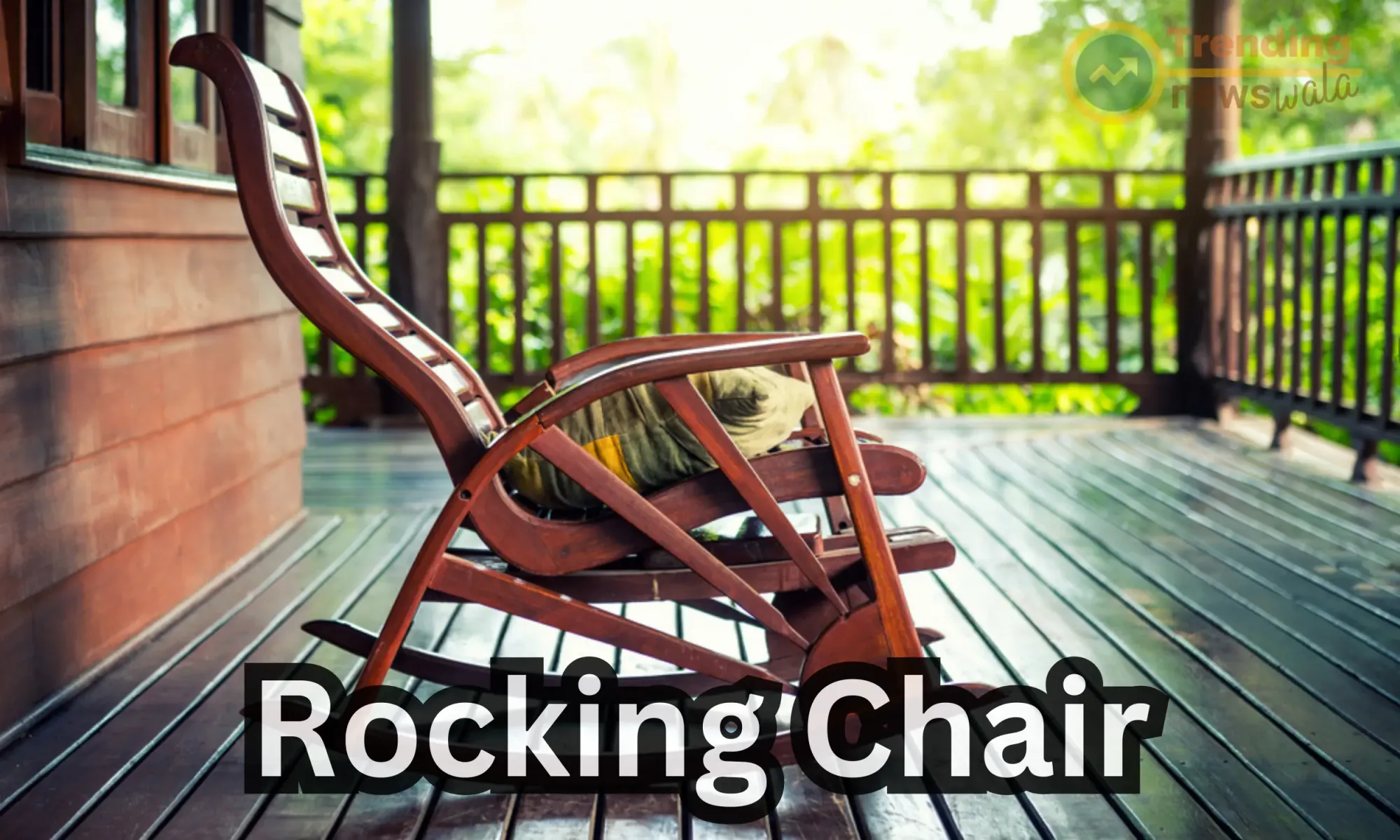
Glider chairs and rocking chairs are both popular choices for those seeking comfortable and soothing seating options. While they share some similarities, they also have distinct features and benefits. Here's a comparison of glider chairs and rocking chairs to help you decide which one may be the right fit for you:
Glider Chair:
- Smooth Gliding Motion: Glider chairs move in a smooth, back-and-forth gliding motion on a horizontal plane. This motion is often considered more gentle and consistent than rocking.
- Swivel and Recline Options: Many glider chairs come with swivel and recline features, allowing for more flexibility in seating positions and angles.
- Upholstered Comfort: Gliders are typically well-padded and upholstered, providing a plush and comfortable seating experience. This makes them a popular choice for nurseries and living rooms.
- Minimal Floor Space: Gliders move horizontally and do not require as much floor space as traditional rocking chairs, making them suitable for smaller rooms.
- Quiet Operation: Glider chairs are known for their quiet operation, making them ideal for soothing a baby to sleep without any creaking noises.
- Durability: Quality glider chairs are often built to withstand years of use, making them a durable choice for families.
Rocking Chair:
- Classic Rocking Motion: Rocking chairs have a traditional rocking motion, moving in an arched, semi-circular path. This motion is associated with a nostalgic and comforting feel.
- Aesthetic Appeal: Rocking chairs come in a variety of styles, from classic to modern, and are often appreciated for their aesthetic appeal. They can be statement pieces in a room.
- Natural Rhythm: The rocking motion of a chair can have a soothing effect and is known to promote relaxation and reduce stress. It's often used by individuals for reading or quiet contemplation.
- Outdoor Use: Some rocking chairs are designed for outdoor use on porches or in gardens, providing a peaceful spot for outdoor relaxation.
- Variety of Materials: Rocking chairs can be made from various materials, including wood, metal, and plastic, offering options for different aesthetics and outdoor durability.
Which One to Choose?
The choice between a glider chair and a rocking chair ultimately depends on your personal preferences and specific needs:
- If you prioritize smooth and quiet motion, comfort, and versatility in seating positions, a glider chair may be the better choice, especially for nursery rooms or spaces with limited floor space.
- If you appreciate the classic rocking motion, the nostalgic and aesthetic appeal of rocking chairs, and the natural rhythm they offer for relaxation, a rocking chair may be more suitable.
- Some people even choose to have both types of chairs in their homes, using a glider for everyday comfort and a rocking chair for moments of relaxation and reflection.
In the end, your decision should align with your comfort preferences, room size, and the overall style of your space. Both glider chairs and rocking chairs have their unique charms, and either can provide a cozy and soothing seating experience.
Occasional Chair

An occasional chair, also known as an accent chair, is a versatile piece of furniture designed to be used on an occasional basis rather than as primary seating. These chairs are known for their distinctive style, often featuring unique designs, colors, or patterns that make them stand out in a room. Occasional chairs are a popular choice for adding a pop of personality and style to a space while providing extra seating when needed. Here are some key features, uses, and tips for choosing an occasional chair:
Key Features of Occasional Chairs:
- Distinctive Design: Occasional chairs often feature unique and eye-catching designs that set them apart from other seating options in a room. This can include distinctive shapes, patterns, or upholstery.
- Compact Size: These chairs are typically smaller in scale compared to sofas and other larger seating furniture, making them suitable for smaller spaces or as complementary pieces.
- Comfort: While style is a primary focus, occasional chairs are still designed to provide comfortable seating. They usually have cushioned seats and, in some cases, armrests.
- Materials: Occasional chairs can be made from a variety of materials, including wood, metal, and upholstery fabrics. The choice of materials often contributes to the chair's overall look and feel.
- Colors and Patterns: These chairs come in a wide range of colors and patterns, allowing you to choose one that complements your decor or makes a bold statement.
Uses of Occasional Chairs:
- Accent Piece: Occasional chairs are often used as accent pieces in a room, adding a burst of color, texture, or style to the overall decor.
- Extra Seating: These chairs are ideal for providing extra seating when guests visit or for creating cozy corners in a room for conversation or relaxation.
- Reading Nooks: Occasional chairs can be placed in reading nooks or cozy corners, creating inviting spaces for reading, meditation, or quiet contemplation.
- Foyer or Entryway: Placing an occasional chair in the entryway or foyer can create a welcoming spot for guests to sit while removing shoes or waiting briefly.
- Dining Area: Some homeowners use occasional chairs at the ends of a dining table as host and hostess chairs to add style and personality to the dining area.
Tips for Choosing an Occasional Chair:
- Consider Style: Choose an occasional chair that complements your decor style, whether it's modern, traditional, eclectic, or bohemian.
- Size and Scale: Ensure the chair fits comfortably in your space without overpowering it. Measure the available area before making a purchase.
- Upholstery Material: Select an upholstery material that suits your lifestyle and maintenance preferences. Consider factors such as durability and ease of cleaning.
- Color and Pattern: Consider how the chair's color and pattern will fit within your existing decor and color scheme. You can use it to create a focal point or tie in with other elements in the room.
- Comfort: Test the chair's comfort by sitting in it to assess the cushioning, backrest support, and armrest height. Comfort is important for occasional seating.
Occasional chairs are versatile and can add character and charm to various rooms in your home. Whether you're looking for a bold and colorful accent chair, a classic and elegant design, or a quirky and playful piece, occasional chairs offer the opportunity to infuse your space with personality and style.
Armless Chair
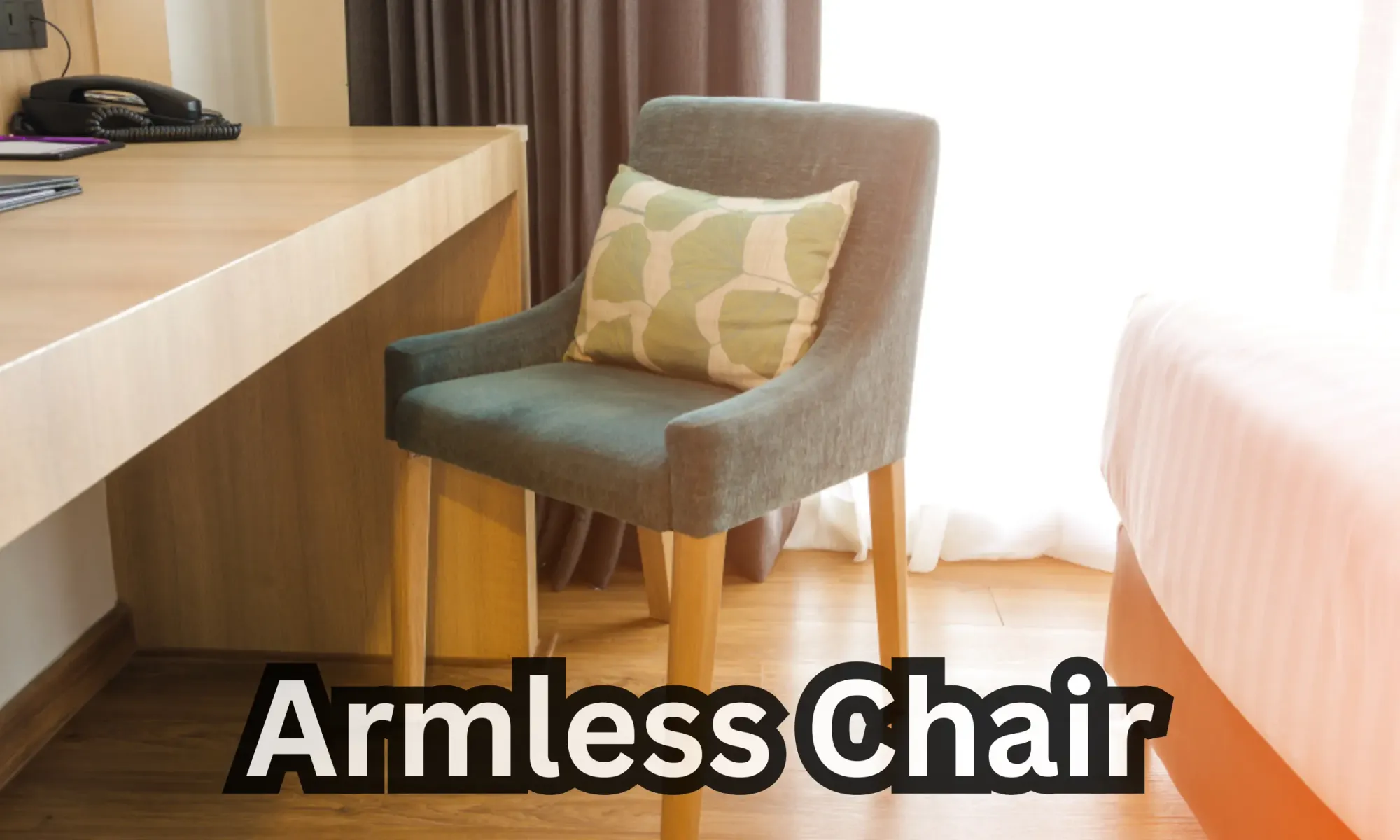
An armless chair is a type of seating furniture that is characterized by its lack of armrests. These chairs are known for their sleek and compact design, making them versatile and suitable for various settings. Armless chairs come in a wide range of styles, materials, and sizes, making them a popular choice for both functional and decorative purposes. Here are some key features, uses, and tips for choosing an armless chair:
Key Features of Armless Chairs:
- Armless Design: As the name suggests, armless chairs do not have armrests, allowing for greater flexibility in seating and placement.
- Compact and Space-Saving: Armless chairs are typically smaller in scale compared to chairs with arms, making them ideal for smaller rooms or as complementary pieces of furniture.
- Variety of Styles: Armless chairs come in various styles, including modern, traditional, contemporary, and eclectic, allowing you to find one that suits your decor preferences.
- Materials: These chairs can be constructed from a variety of materials, including wood, metal, plastic, and upholstered options such as fabric or leather.
- Colors and Patterns: Armless chairs are available in a wide range of colors and patterns, making it easy to find one that matches your decor or adds a pop of color to a room.
Uses of Armless Chairs:
- Additional Seating: Armless chairs are often used as additional seating in living rooms, bedrooms, or home offices, providing extra places for guests to sit.
- Dining Chairs: Some dining chairs are designed without arms, offering a streamlined and space-saving seating solution for dining rooms or kitchen nooks.
- Office and Workspace: Armless chairs are suitable for office settings and workspaces, offering comfort and mobility without the restriction of armrests.
- Accent Pieces: Armless chairs can be used as decorative accent pieces in a room, adding style, color, or pattern to the overall decor.
- Reading Nooks: Placing an armless chair in a reading nook or corner creates a cozy spot for reading, relaxation, or enjoying a cup of tea.
Tips for Choosing an Armless Chair:
- Consider Style: Choose an armless chair that complements your decor style, whether it's contemporary, traditional, or eclectic. Look for a design that aligns with your overall aesthetic.
- Size and Scale: Ensure the chair fits comfortably in your space without overpowering it. Measure the available area before making a purchase.
- Materials: Select a chair material that suits your needs and preferences. Upholstered options provide comfort, while wood or metal chairs offer durability and a distinct look.
- Color and Pattern: Consider how the chair's color and pattern will fit within your existing decor and color scheme. You can use it to create a focal point or tie in with other elements in the room.
- Comfort: Test the chair's comfort by sitting in it to assess the cushioning, seat depth, and overall comfort level. Comfort is important for extended periods of sitting.
Armless chairs are versatile and space-saving seating options that can be used for both functional and decorative purposes. Whether you're looking for a classic upholstered chair, a sleek modern design, or a vibrant accent piece, armless chairs offer flexibility in arranging and styling your living spaces.
Lounge Chair
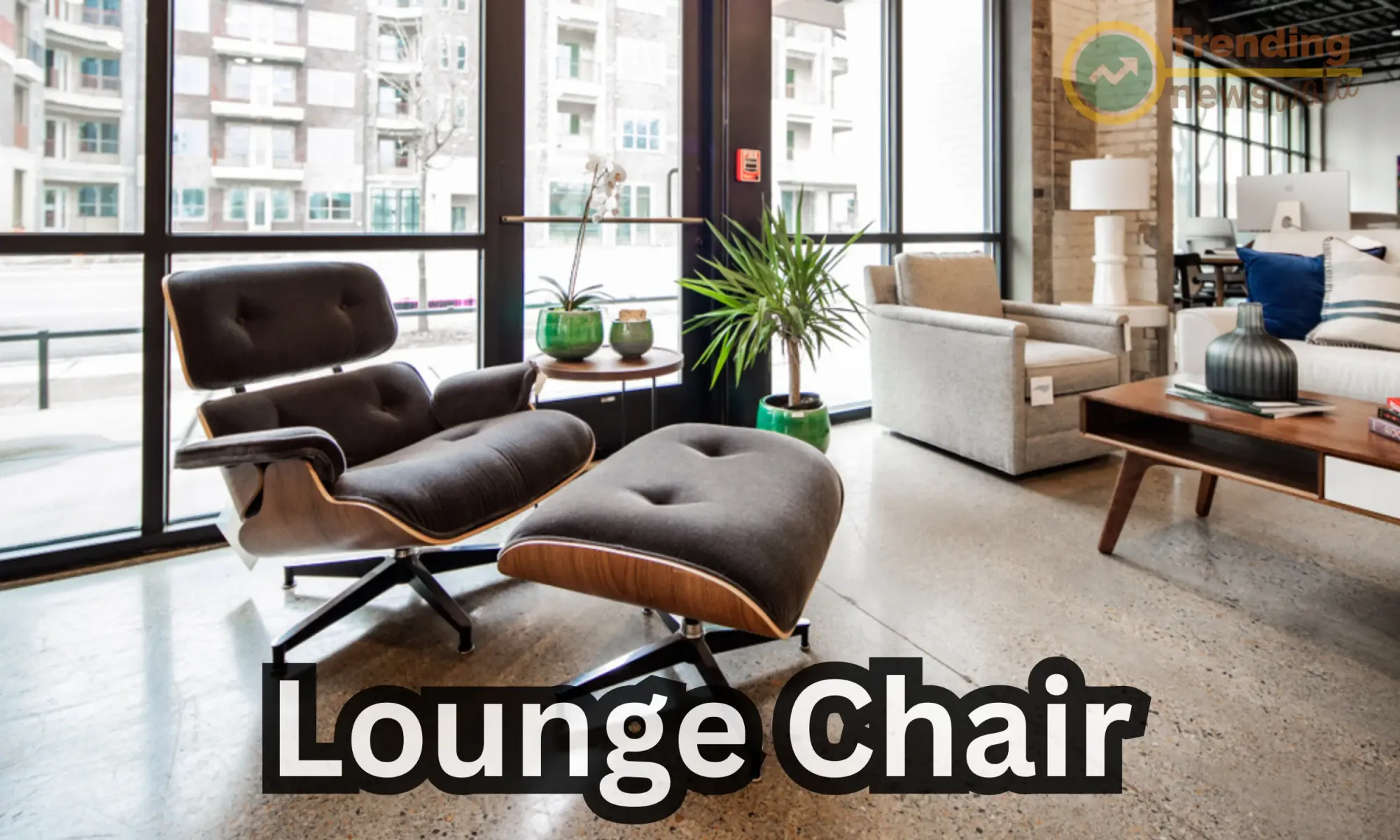
A lounge chair is a type of seating furniture designed for relaxation and comfort. These chairs are known for their reclined and laid-back design, making them ideal for lounging, reading, or simply unwinding. Lounge chairs come in various styles, materials, and sizes, offering a wide range of options to suit different preferences and decor themes. Here are some key features, uses, and tips for choosing a lounge chair:
Key Features of Lounge Chairs:
- Reclined Design: Lounge chairs have a reclined or low-slung design that allows users to relax in a comfortable, semi-horizontal position.
- Cushioned Seating: These chairs typically feature well-padded seats, backrests, and sometimes armrests to provide a plush and comfortable seating experience.
- Materials: Lounge chairs can be constructed from various materials, including wood, metal, plastic, or a combination of materials. The choice of material can influence the chair's style and durability.
- Upholstery Options: Many lounge chairs are upholstered with fabric, leather, or synthetic materials, offering a range of textures and colors to match different decor styles.
- Footrests and Ottoman: Some lounge chairs come with a matching ottoman or footrest, providing added comfort and support for the legs and feet.
- Swivel or Recline Features: Some lounge chairs offer swivel or recline features, allowing users to adjust their seating position for maximum comfort.
Uses of Lounge Chairs:
- Living Room: Lounge chairs are often used in living rooms as comfortable seating options for reading, watching TV, or simply relaxing. They can be placed alongside sofas or as standalone pieces.
- Bedroom: In bedrooms, lounge chairs can serve as cozy reading chairs, providing a comfortable spot for enjoying a book or magazine.
- Sunroom or Patio: Certain lounge chairs are designed for outdoor use in sunrooms, patios, or gardens, allowing users to relax and enjoy the outdoors.
- Office or Study: Lounge chairs with ergonomic features can be used in home offices or study areas to provide a comfortable and stylish seating solution.
- Library or Reading Nook: Placing a lounge chair in a library or dedicated reading nook creates an inviting space for leisurely reading or quiet contemplation.
Tips for Choosing a Lounge Chair:
- Consider Style: Choose a lounge chair that complements your decor style, whether it's modern, traditional, mid-century, or contemporary. Look for a design that matches your overall aesthetic.
- Size and Scale: Ensure the chair fits comfortably in your space without overwhelming it. Measure the available area before making a purchase.
- Materials: Select a chair material that suits your needs and decor. Indoor lounge chairs often feature upholstered fabric or leather, while outdoor lounge chairs may use weather-resistant materials.
- Upholstery: Consider the type of upholstery that appeals to you in terms of texture, color, and maintenance. Leather upholstery offers a classic and durable option, while fabric provides versatility in design.
- Comfort: Test the chair's comfort by sitting in it to assess the cushioning, backrest support, and armrest height. Comfort is essential for extended periods of lounging.
- Additional Features: If you prefer added features like swivel or recline mechanisms, look for lounge chairs that offer these options.
Lounge chairs are designed to provide a luxurious and relaxing seating experience. Whether you're creating a cozy reading nook in your living room or adding a stylish outdoor lounge chair to your patio, these chairs offer both comfort and style, making them a favorite choice for unwinding and lounging.
Egg Chair
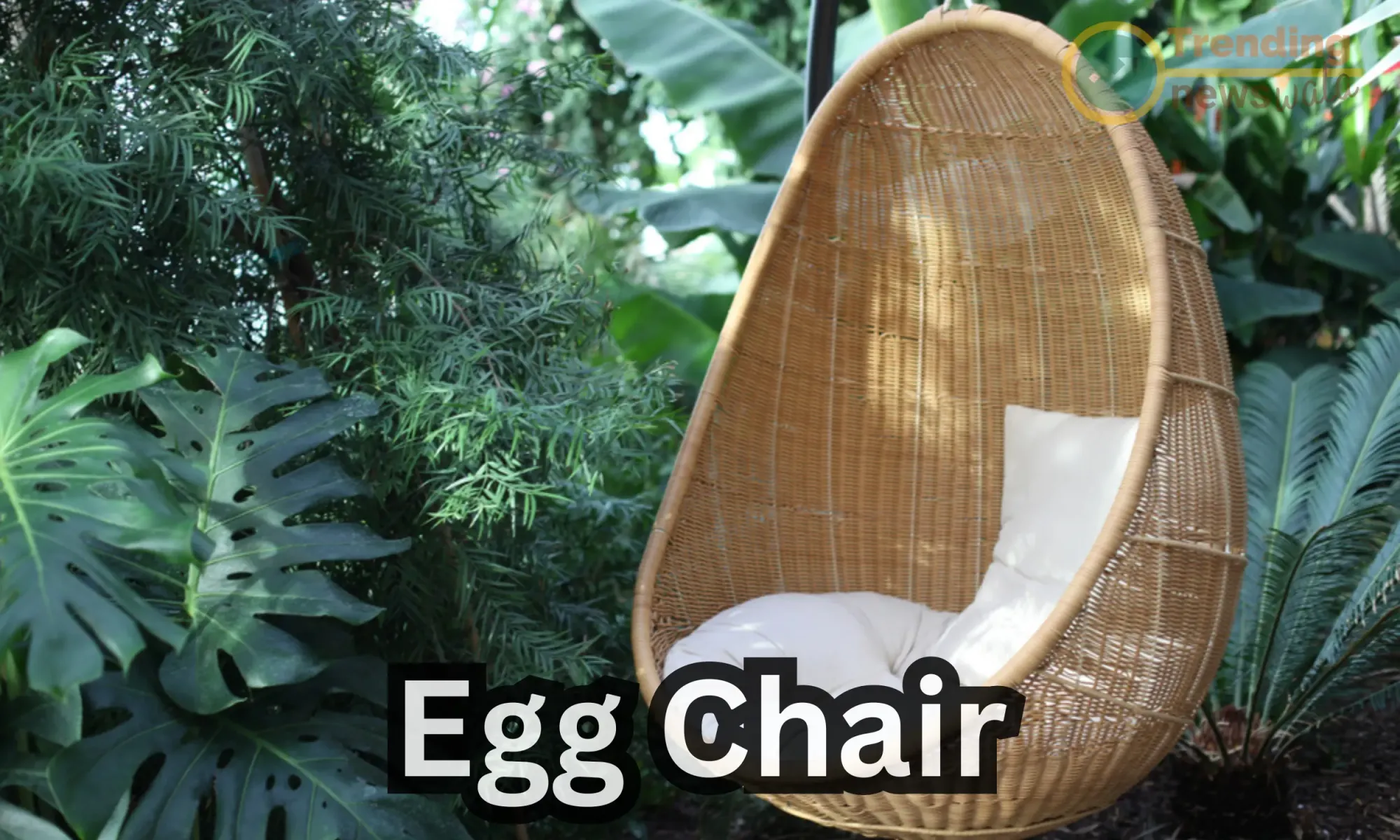
The Egg Chair is an iconic and distinctive piece of furniture designed by Danish architect and designer Arne Jacobsen in 1958. This chair is known for its unique, sculptural shape that resembles an eggshell, providing a cocoon-like seating experience. The Egg Chair has become an iconic symbol of mid-century modern design and is celebrated for its style and comfort. Here are some key features, uses, and tips for choosing an Egg Chair:
Key Features of the Egg Chair:
- Egg-Shaped Design: The Egg Chair is characterized by its curved and organic shape that envelops the user, offering a sense of privacy and comfort.
- Swivel Base: Most Egg Chairs come with a swivel base, allowing users to rotate the chair 360 degrees for easy movement and positioning.
- Upholstery: The chair is typically upholstered with high-quality fabric or leather, providing a luxurious and tactile experience.
- Cushioned Comfort: Egg Chairs are known for their generously padded seats and backrests, ensuring a comfortable seating experience.
- Color Options: These chairs are available in a wide range of upholstery colors and materials, allowing for customization to match your decor.
- Iconic Design: The Egg Chair is considered an iconic piece of mid-century modern furniture and is often featured in design exhibitions and interior design publications.
Uses of the Egg Chair:
- Living Room: The Egg Chair is a stylish and eye-catching addition to living rooms, where it can be used as an accent chair or a statement piece.
- Reading Nook: Placing an Egg Chair in a reading nook or corner creates an inviting and cozy spot for reading or relaxation.
- Home Office: It can be used in home offices as a comfortable and stylish seating option for work or creative tasks.
- Lounge Area: In commercial settings like hotels, lounges, and reception areas, the Egg Chair provides a touch of elegance and comfort for guests.
Tips for Choosing an Egg Chair:
- Consider Style: The Egg Chair is a design statement, so choose a color and upholstery material that complements your decor style, whether it's classic, contemporary, or eclectic.
- Size and Space: Measure the available space in your room to ensure the chair fits comfortably without overcrowding the area.
- Quality and Material: Invest in a high-quality Egg Chair with durable upholstery and a sturdy base to ensure longevity and comfort.
- Comfort: Test the chair's comfort by sitting in it to assess the cushioning, backrest support, and overall feel. Comfort is a crucial factor, especially if you plan to use it for extended periods.
- Maintenance: Consider the ease of cleaning and maintaining the chosen upholstery material, as some options may require more care than others.
The Egg Chair is a timeless and iconic piece of furniture that combines artistry, comfort, and style. Whether you place it in your living room, reading nook, or home office, it's sure to become a focal point and conversation piece, adding a touch of elegance and sophistication to your space.
Papasan Chair
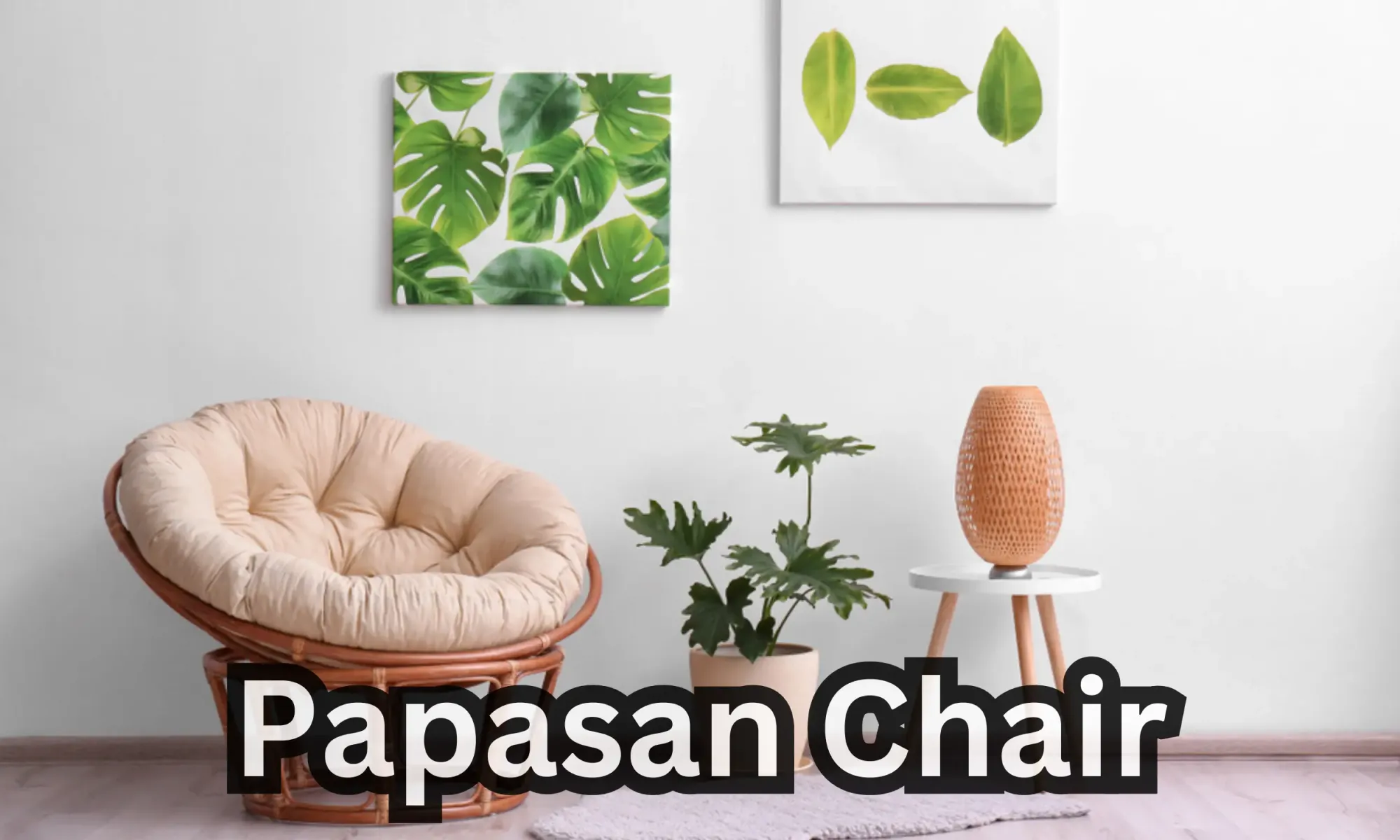
A Papasan chair, also known as a bowl chair, is a unique and distinctive type of seating furniture that originated in Southeast Asia, particularly in the Philippines. These chairs are known for their round, bowl-shaped seat cushions that are typically made of rattan or wicker. Papasan chairs have a comfortable and cozy design, making them popular choices for relaxation and lounging. Here are some key features, uses, and tips for choosing a Papasan chair:
Key Features of Papasan Chairs:
- Round Seat Cushion: The most prominent feature of a Papasan chair is its round seat cushion, which is often generously padded for comfort.
- Sturdy Base: Papasan chairs typically have a stable and sturdy base made of rattan or metal, which supports the cushion and provides a base for the chair to swivel.
- Swivel Design: Many Papasan chairs have a swivel or rotating base that allows the chair to turn 360 degrees, offering flexibility in seating positions.
- Removable Cushion: The seat cushion is usually removable, making it easy to clean or replace if necessary.
- Upholstery Options: Papasan chairs come with a variety of cushion upholstery options, including fabric, microfiber, and even faux fur, allowing for customization and style choices.
Uses of Papasan Chairs:
- Lounge and Relaxation: Papasan chairs are designed for relaxation and lounging. They provide a comfortable and cozy seating option for reading, watching TV, or simply unwinding.
- Bedroom: Papasan chairs can be placed in bedrooms as reading chairs or as stylish additions to create a comfortable and inviting space.
- Dorm Rooms: Due to their compact size and comfort, Papasan chairs are popular choices for dorm rooms, offering a place for studying or relaxing.
- Nurseries: Some parents use Papasan chairs in nurseries as a comfortable spot for feeding, soothing, or spending time with their baby.
- Outdoor Use: While traditional Papasan chairs are designed for indoor use, there are outdoor versions available with weather-resistant materials for use on patios or in gardens.
Tips for Choosing a Papasan Chair:
- Consider Size: Check the dimensions of the chair to ensure it fits comfortably in your chosen space.
- Quality of Base: Look for a Papasan chair with a sturdy base that can support the weight of the cushion and provide stability.
- Upholstery Material: Choose a cushion upholstery material that suits your preferences in terms of comfort and style. Consider factors such as durability and ease of cleaning.
- Swivel or Fixed: Decide whether you prefer a swivel Papasan chair or a fixed one, depending on your intended use and seating preferences.
- Cushion Thickness: Assess the thickness of the cushion to ensure it offers adequate comfort for your needs.
- Maintenance: Consider the maintenance requirements of the cushion material and base. Some materials may require more care than others.
Papasan chairs are known for their distinctive and cozy design, making them a favorite choice for those seeking a unique and comfortable seating option. Whether you place one in your living room, bedroom, or even outdoors, a Papasan chair can provide a comfortable and stylish spot for relaxation and leisure.
Mid-Century Modern Chair
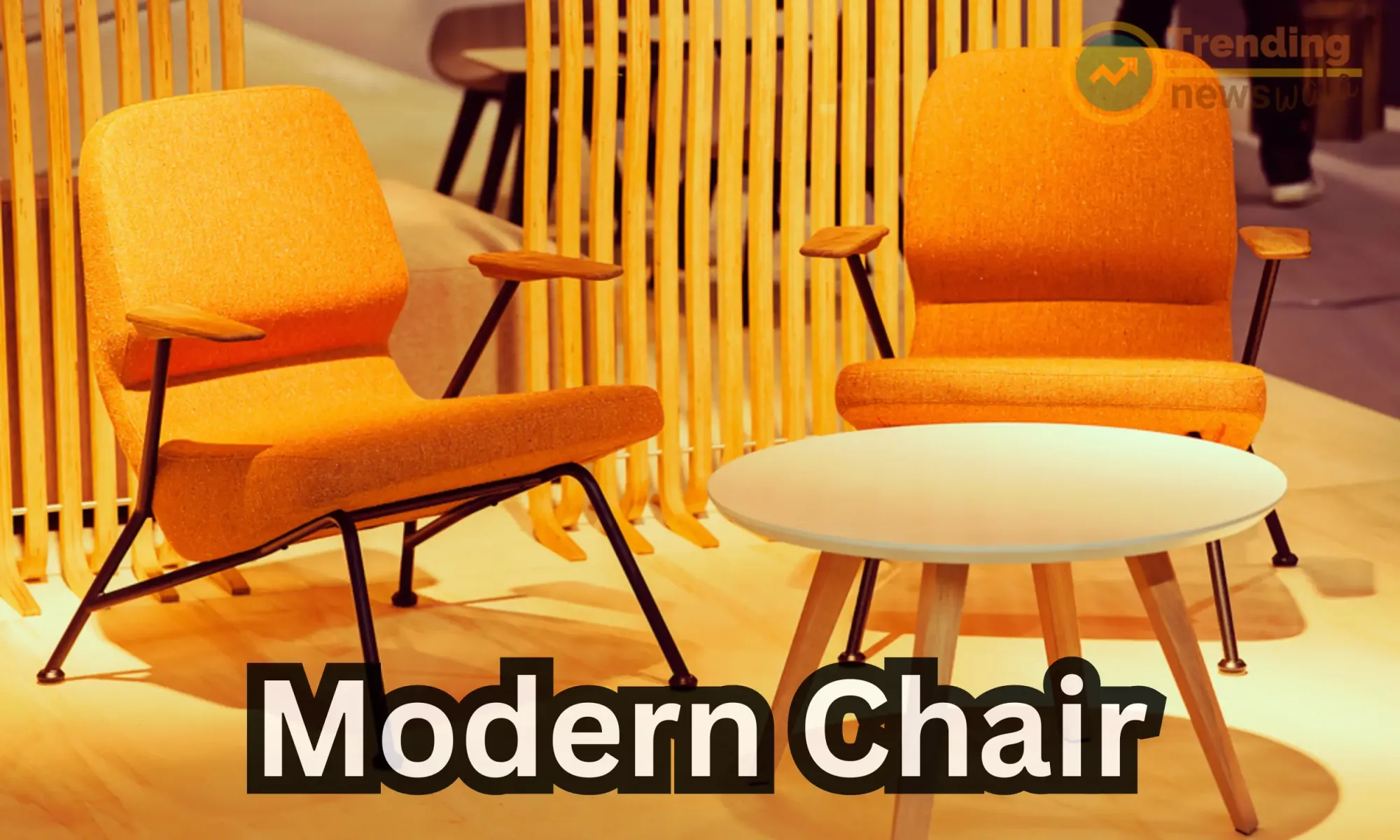
A Mid-Century Modern chair is a type of seating furniture that reflects the design principles and aesthetics of the mid-20th century, specifically the period from the mid-1930s to the mid-1960s. This style of chair is known for its clean lines, organic shapes, and minimalistic yet functional design. Mid-Century Modern chairs are celebrated for their timeless appeal, making them popular choices for both classic and contemporary interiors. Here are some key features, uses, and tips for choosing a Mid-Century Modern chair:
Key Features of Mid-Century Modern Chairs:
- Clean and Streamlined Design: Mid-Century Modern chairs feature clean, uncluttered lines and simple forms, often with gentle curves and organic shapes.
- Use of Natural Materials: Wood is a common material used in the construction of Mid-Century Modern chairs, with an emphasis on showcasing the natural grain and beauty of the wood.
- Geometric Patterns: Some Mid-Century Modern chairs incorporate geometric patterns, both in the design of the chair itself and in the upholstery or cushions.
- Minimalistic Legs: Chairs of this style often have tapered or slender legs, which contribute to their airy and lightweight appearance.
- Bold Colors: While neutral colors like black, white, and natural wood tones are prevalent, Mid-Century Modern chairs may also feature bold and vibrant colors in upholstery or accents.
- Comfortable Seating: Despite their minimalistic appearance, Mid-Century Modern chairs are designed for comfort, often with well-padded seats and backrests.
Uses of Mid-Century Modern Chairs:
- Living Room: Mid-Century Modern chairs are commonly used as accent chairs in living rooms, providing stylish and comfortable seating for guests.
- Dining Room: Dining chairs with Mid-Century Modern design elements are popular choices for modern dining spaces, offering both aesthetics and comfort.
- Home Office: Mid-Century Modern desk chairs are functional and stylish options for home offices, blending well with contemporary workspaces.
- Bedroom: These chairs can be placed in bedrooms as reading or vanity chairs, adding a touch of retro elegance to the space.
- Lobby or Waiting Areas: In commercial settings, Mid-Century Modern chairs can be used in lobbies, waiting areas, and reception spaces to create a welcoming and timeless atmosphere.
Tips for Choosing a Mid-Century Modern Chair:
- Consider Style: Mid-Century Modern chairs come in various design styles, from classic to more daring and experimental. Choose one that aligns with your personal taste and complements your decor.
- Material: Wood is a hallmark material, but you can find Mid-Century Modern chairs made from other materials like metal or plastic. Consider which material suits your preferences and the intended use of the chair.
- Upholstery: Upholstered Mid-Century Modern chairs often feature fabric or leather in both neutral and vibrant colors. Select an upholstery option that matches your decor and lifestyle.
- Proportion and Size: Pay attention to the chair's proportions and size to ensure it fits comfortably in your space without overpowering it.
- Authentic or Reproduction: Decide whether you prefer an authentic vintage Mid-Century Modern chair or a high-quality reproduction. Authentic pieces may be more expensive but have historical value.
Mid-Century Modern chairs are timeless classics that continue to be appreciated for their elegance, functionality, and design innovation. Whether you're looking to add a touch of retro flair to your home or complement a contemporary interior, a Mid-Century Modern chair can be a versatile and stylish addition to your space.
Armchair with Ottoman

An armchair with an ottoman is a combination of seating furniture that pairs a comfortable armchair with a separate ottoman or footrest. This arrangement provides added comfort and versatility, allowing users to stretch out their legs and feet while sitting in the armchair. Armchairs with ottomans are often chosen for their relaxation and lounging capabilities, making them popular choices for living rooms, bedrooms, and home offices. Here are some key features, uses, and tips for choosing an armchair with an ottoman:
Key Features of Armchair with Ottoman:
- Armchair: The armchair is typically a well-padded and comfortable chair with armrests, a backrest, and a seat cushion. It may have various designs, styles, and upholstery options.
- Ottoman: The ottoman is a separate piece of furniture that serves as a footrest. It is usually cushioned and designed to complement the armchair in terms of style and upholstery.
- Matching Set: Armchairs with ottomans are often sold as a matching set, ensuring that the ottoman coordinates with the armchair in terms of design, color, and materials.
- Comfortable Seating: The armchair provides comfortable seating, while the ottoman allows users to elevate their legs and feet, promoting relaxation and improved circulation.
- Versatility: Ottomans can be used not only as footrests but also as extra seating, occasional tables, or even storage in some designs.
Uses of Armchair with Ottoman:
- Living Room: Armchairs with ottomans are commonly placed in living rooms as comfortable and stylish seating options. They can be used for reading, watching TV, or simply relaxing.
- Bedroom: These sets are also popular in bedrooms, where they serve as reading chairs or as a cozy spot to unwind before bedtime.
- Nursery: In nurseries or baby rooms, armchairs with ottomans are often used for nursing, feeding, or soothing the baby to sleep.
- Home Office: Armchairs with ottomans can provide comfortable seating for home offices, allowing users to take short breaks and put their feet up.
- Library or Study: In dedicated reading spaces or studies, these sets create inviting corners for reading, studying, or contemplation.
Tips for Choosing an Armchair with Ottoman:
- Consider Style: Choose a set that complements your decor style, whether it's classic, contemporary, mid-century modern, or eclectic. Ensure that both the armchair and ottoman align with your overall aesthetic.
- Size and Scale: Measure the available space in your room to ensure that the armchair with the ottoman fits comfortably without overwhelming the area.
- Upholstery Material: Select upholstery materials for both the armchair and ottoman that suit your preferences in terms of comfort, durability, and ease of cleaning. Coordinate colors and patterns with your decor.
- Comfort: Test the comfort of the armchair by sitting in it to assess the cushioning, backrest support, and armrest height. Consider the ergonomics of the ottoman as well.
- Quality: Invest in a high-quality set with a sturdy frame, well-padded cushions, and durable upholstery to ensure longevity and comfort.
- Ottoman Functionality: Depending on your needs, choose an ottoman with added functionality, such as storage space under the cushion or a flip-top lid.
Armchairs with ottomans offer a versatile and comfortable seating solution that encourages relaxation and comfort. Whether you're looking to create a cozy reading nook, a stylish living room arrangement, or a comfortable spot for nursing in the nursery, this combination of furniture can enhance the comfort and functionality of your space.
Convertible Chair

A convertible chair, often referred to as a sleeper chair or chair bed, is a versatile piece of furniture that serves multiple functions. These chairs are designed to provide comfortable seating during the day and can be transformed into a bed or a chaise lounge for sleeping or lounging at night. Convertible chairs are ideal for small living spaces where maximizing functionality is essential. Here are some key features, uses, and tips for choosing a convertible chair:
Key Features of Convertible Chairs:
- Adjustable Backrest: Convertible chairs typically have an adjustable backrest that can be reclined or flattened to convert the chair into a bed or chaise lounge.
- Convertible Mechanism: The mechanism for transforming the chair varies by design. Some chairs have a simple fold-down backrest, while others may include a pull-out mattress or a hidden trundle bed.
- Compact Size: Convertible chairs are designed to be space-saving and compact, making them suitable for small apartments, studios, guest rooms, or home offices.
- Comfortable Seating: When used as chairs, convertible chairs provide comfortable seating with padded cushions and armrests.
- Materials and Upholstery: These chairs come in various materials, including fabric, leather, or microfiber, with a wide range of upholstery options to match different decor styles.
Uses of Convertible Chairs:
- Guest Bed: Convertible chairs are often used as guest beds when friends or family members stay overnight. They provide a comfortable sleeping surface without the need for a separate guest room or sofa bed.
- Home Office: In home offices, convertible chairs can serve as a space-saving solution for occasional naps or breaks during work hours.
- Small Apartments: In small apartments or studio apartments, these chairs can be used as a primary sofa and converted into a bed at night to save space.
- Children's Rooms: Convertible chairs are also popular in children's rooms or playrooms, providing a cozy spot for reading or lounging during the day and a guest bed for sleepovers.
- Multi-Functional Rooms: In rooms with multiple functions, such as a living room that doubles as a guest room, a convertible chair can provide seating during the day and a bed at night.
Tips for Choosing a Convertible Chair:
- Consider Size: Measure the available space in your room to ensure the convertible chair fits both in its chair and bed configurations.
- Mechanism: Understand the mechanism used to convert the chair into a bed and back. Some mechanisms are easier to operate than others.
- Upholstery: Choose upholstery materials and colors that match your decor and are comfortable for both seating and sleeping.
- Quality: Invest in a high-quality convertible chair with a sturdy frame and durable cushions to ensure comfort and longevity.
- Mattress Type: If the chair includes a mattress, consider the thickness and comfort level of the mattress to ensure a good night's sleep.
- Maintenance: Select upholstery materials that are easy to clean and maintain, especially if the chair will be used frequently as a bed.
Convertible chairs offer a practical and space-saving solution for those with limited living space or a need for occasional guest accommodations. Whether you're furnishing a small apartment, creating a multi-functional room, or looking for a versatile seating option, a convertible chair can provide both comfort and functionality in one piece of furniture.
Zero Gravity Chair
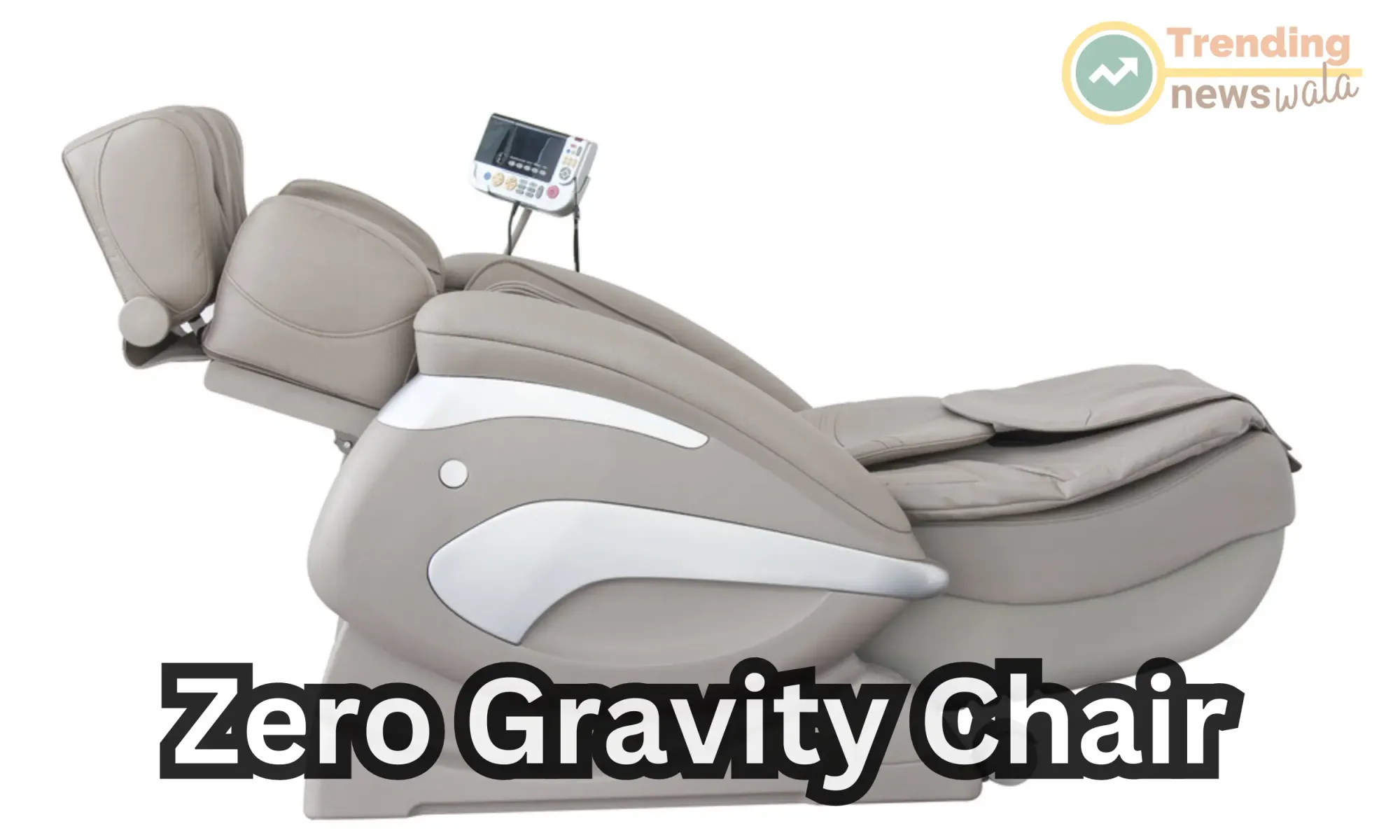
A zero gravity chair is a type of reclining chair designed to position the user in a way that mimics the feeling of weightlessness or "zero gravity." These chairs are known for their ergonomic design, which allows the user to recline in a semi-horizontal position with their legs elevated above their heart. Zero gravity chairs are often chosen for their potential health benefits and relaxation properties. Here are some key features, uses, and tips for choosing a zero gravity chair:
Key Features of Zero Gravity Chairs:
- Reclining Design: Zero gravity chairs are designed to recline, allowing users to adjust their position to various angles, including the zero gravity position, which evenly distributes body weight and minimizes stress on the spine.
- Ergonomic Support: These chairs provide ergonomic support for the entire body, including the head, neck, back, and legs. They often feature padded cushions or memory foam for added comfort.
- Adjustable Position: Users can adjust the reclining position of the chair to find their desired level of comfort. Some models may have multiple recline settings.
- Locking Mechanism: Many zero gravity chairs include a locking mechanism that holds the chair in a specific position, ensuring stability and safety.
- Materials: Zero gravity chairs come in various materials, including steel or aluminum frames with durable fabric or mesh seating. Outdoor versions may have weather-resistant materials.
- Portability: Some zero gravity chairs are designed to be portable and foldable, making them easy to transport and store when not in use.
Uses of Zero Gravity Chairs:
- Relaxation: Zero gravity chairs are primarily used for relaxation and stress reduction. The reclined position promotes a sense of weightlessness and relaxation, making them ideal for unwinding after a long day.
- Outdoor Use: Outdoor zero gravity chairs are popular for use on patios, decks, or by the pool. They provide a comfortable spot for sunbathing, reading, or stargazing.
- Indoor Use: Indoor zero gravity chairs can be placed in living rooms, bedrooms, or home theaters for comfortable seating while watching TV or reading.
- Health Benefits: Some users choose zero gravity chairs for potential health benefits, such as improving circulation, relieving back pain, reducing pressure on the spine, and easing tension in the muscles.
Tips for Choosing a Zero Gravity Chair:
- Budget: Determine your budget, as zero gravity chairs come in a range of price points with varying features and quality.
- Size and Weight Capacity: Check the dimensions and weight capacity of the chair to ensure it accommodates your body size and weight.
- Material: Consider whether you need an indoor or outdoor chair and choose materials accordingly. Outdoor chairs should be weather-resistant.
- Recline Mechanism: Assess the ease of adjusting and locking the recline position, as well as the number of available positions.
- Comfort: Sit in the chair to test its comfort, padding, and support, especially if you plan to use it for extended periods.
- Portability: If you need a portable chair, look for a model that is foldable and easy to transport.
Zero gravity chairs are prized for their ability to promote relaxation and provide comfort. Whether you use one for outdoor leisure, indoor relaxation, or potential health benefits, a zero gravity chair can be a valuable addition to your home or outdoor space.
When choosing a living room chair, consider factors like comfort, style, size, and how well it fits with your overall decor theme. Mixing and matching different chair types can also add visual interest to your living room while catering to various seating needs.

Certainly! Here are some frequently asked questions (FAQ) about living room chairs:
What types of living room chairs are available?
There are various types of living room chairs, including armchairs, recliners, accent chairs, wingback chairs, club chairs, chaise lounges, Bergère chairs, tub chairs, slipper chairs, swivel chairs, glider or rocking chairs, and occasional chairs. Each type has its unique design and features.
How do I choose the right living room chair for my space?
Consider factors such as the available space, your decor style, the chair's purpose (e.g., reading, lounging, accent), and your personal comfort preferences. Measure the space to ensure the chair fits comfortably.
What materials are living room chairs made from?
Living room chairs can be made from various materials, including wood, metal, plastic, and upholstery materials like fabric, leather, microfiber, or velvet. The choice of material affects both the chair's aesthetics and durability.
What is the difference between an accent chair and an armchair?
An armchair is a type of chair with armrests and is often more substantial in size, providing a comfortable place to sit. An accent chair is a decorative chair that adds a stylish touch to a room but may not always have armrests. While many armchairs can also be accent chairs, not all accent chairs are armchairs.
How do I maintain and clean my living room chair?
Maintenance and cleaning depend on the chair's material. For fabric chairs, vacuum regularly and spot clean as needed. Leather chairs may require leather conditioner, while wooden chairs benefit from periodic polishing. Follow the manufacturer's care instructions for best results.
Are there specific chairs suitable for small living rooms?
Yes, there are space-saving options like armless chairs, slipper chairs, and compact accent chairs that are designed to fit well in smaller living rooms without overcrowding the space.
What is the average lifespan of a living room chair?
The lifespan of a living room chair depends on factors such as the quality of construction, materials used, and how well it's maintained. A well-made chair can last anywhere from 5 to 15 years or even longer with proper care.
Can I customize the upholstery of my living room chair?
Yes, many furniture retailers offer customization options where you can choose the upholstery fabric, color, and sometimes even the finish of the chair legs to match your decor.
What is the difference between a swivel chair and a glider/rocking chair?
A swivel chair has a base that allows it to rotate 360 degrees, offering flexibility in movement. A glider or rocking chair, on the other hand, moves in a rocking motion either back and forth (rocking chair) or in a gliding motion (glider chair) while remaining stationary on the floor.
How can I add cushions and throws to enhance the comfort and style of my living room chair?
Adding cushions and throws is a great way to enhance the comfort and style of your living room chair. Choose cushions that match your decor and provide extra support, and drape a decorative throw blanket over the chair for added warmth and style.
These FAQs should help you understand various aspects of living room chairs and make informed decisions when selecting the right chair for your space and needs.

